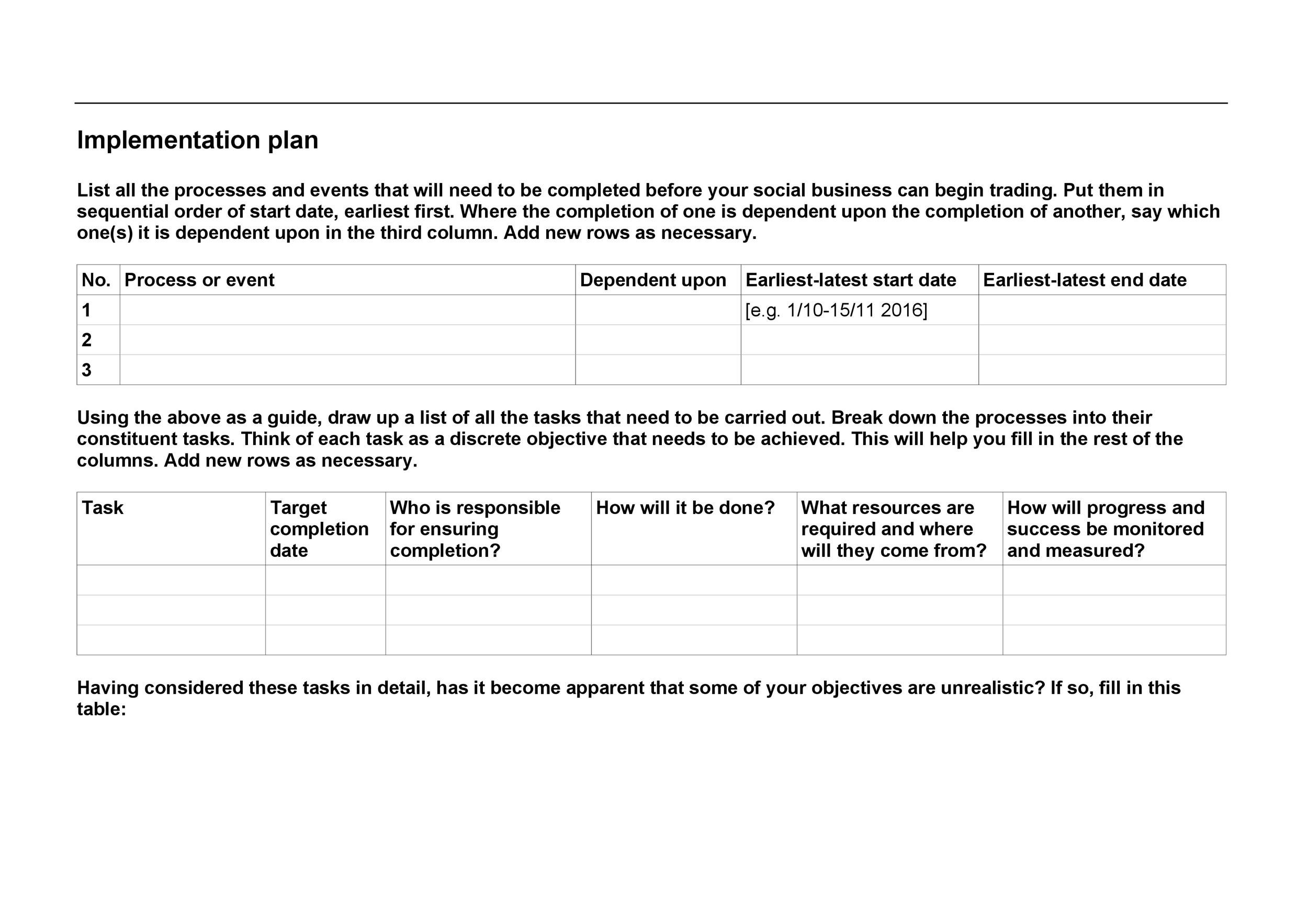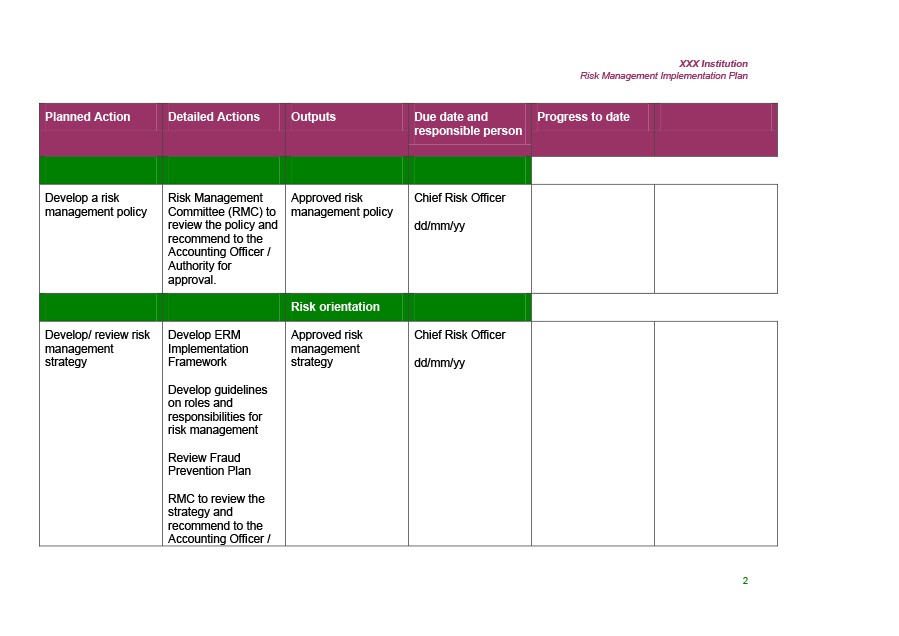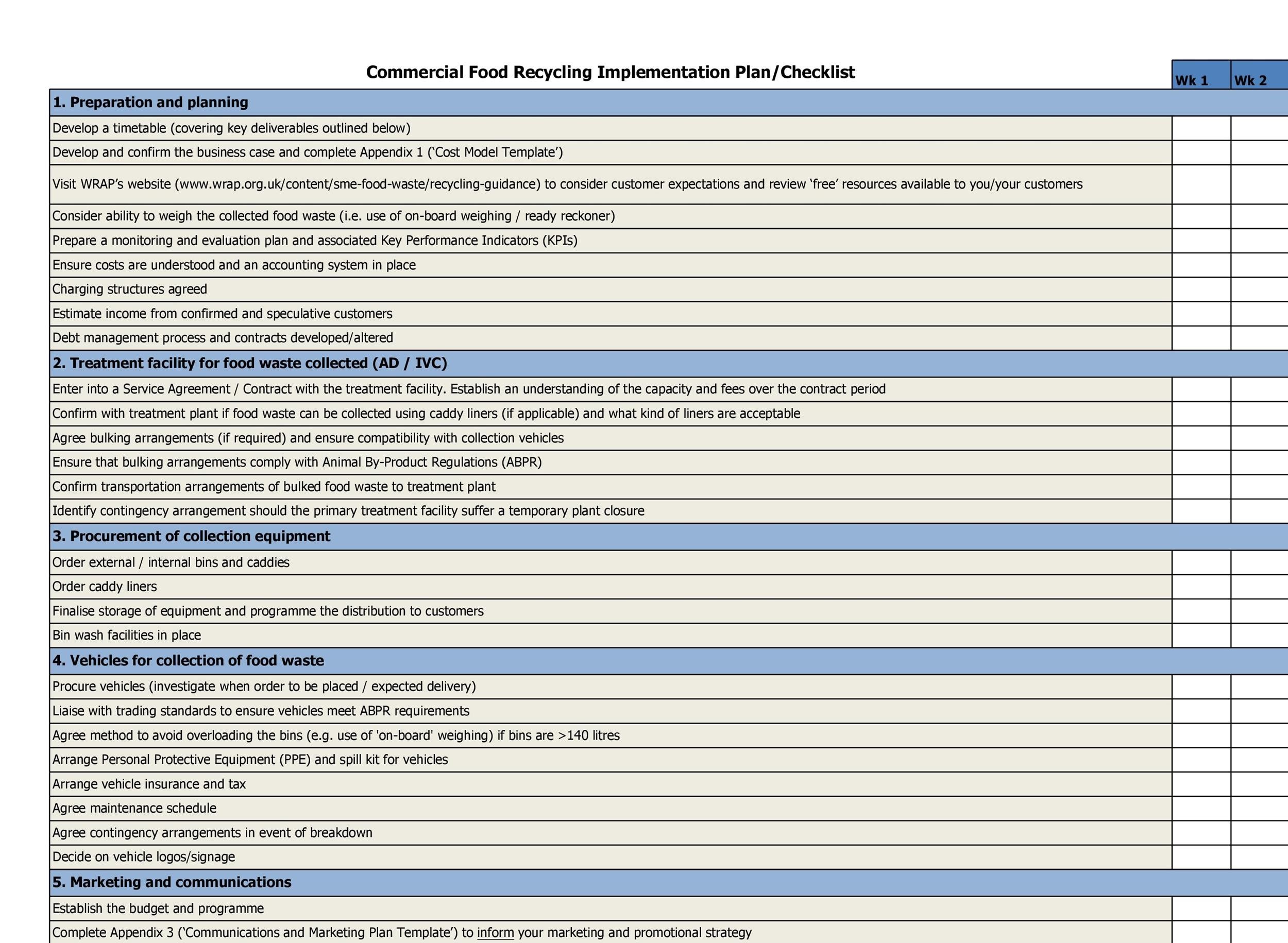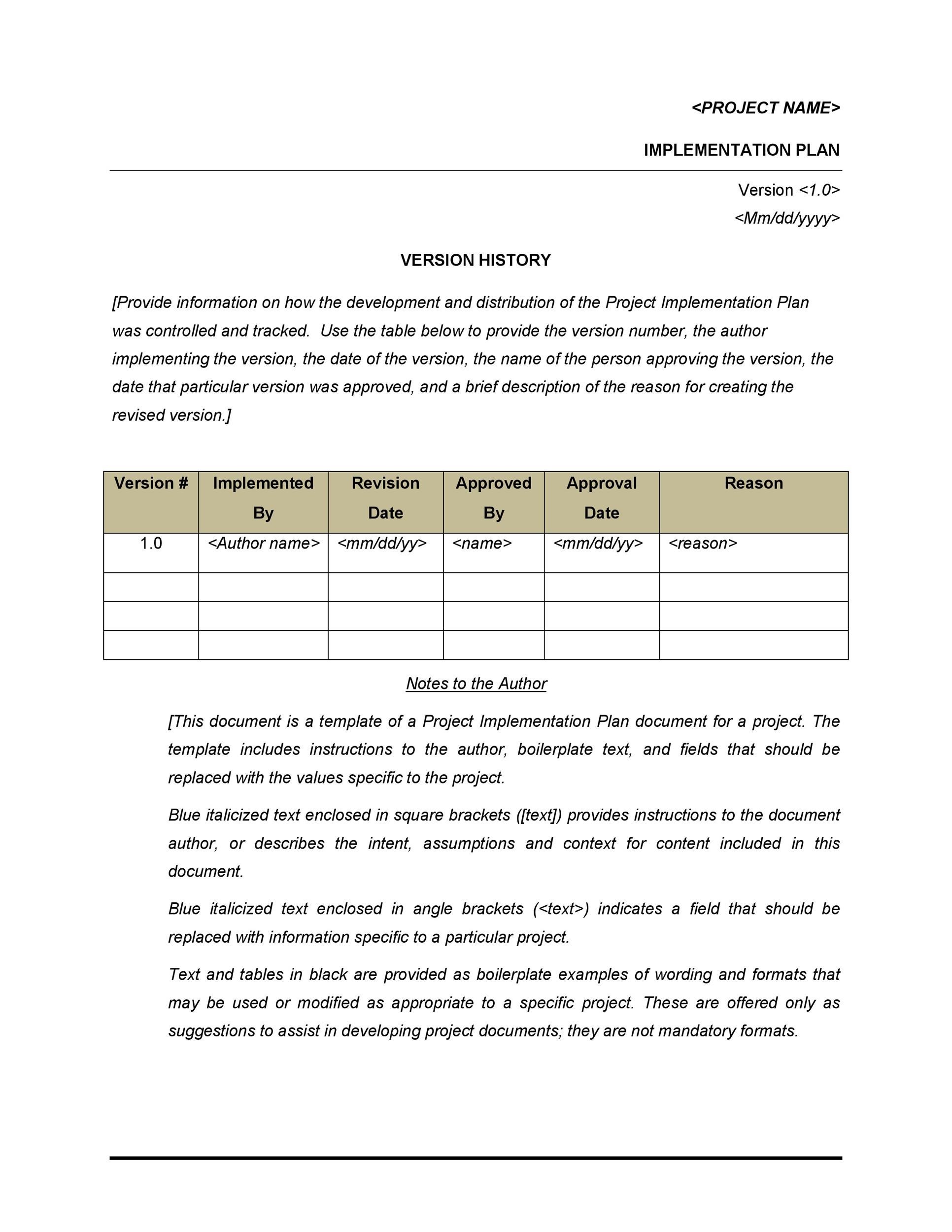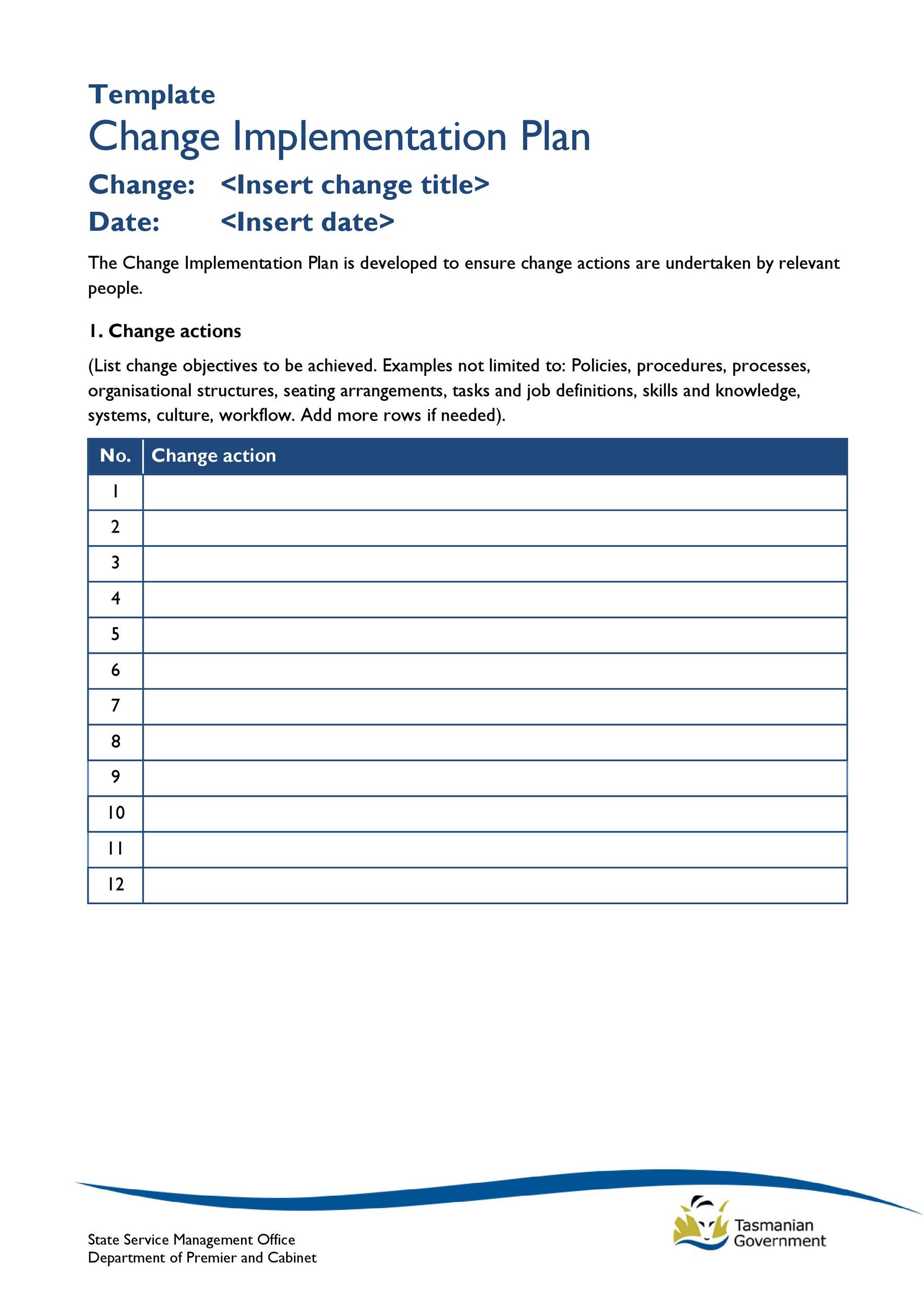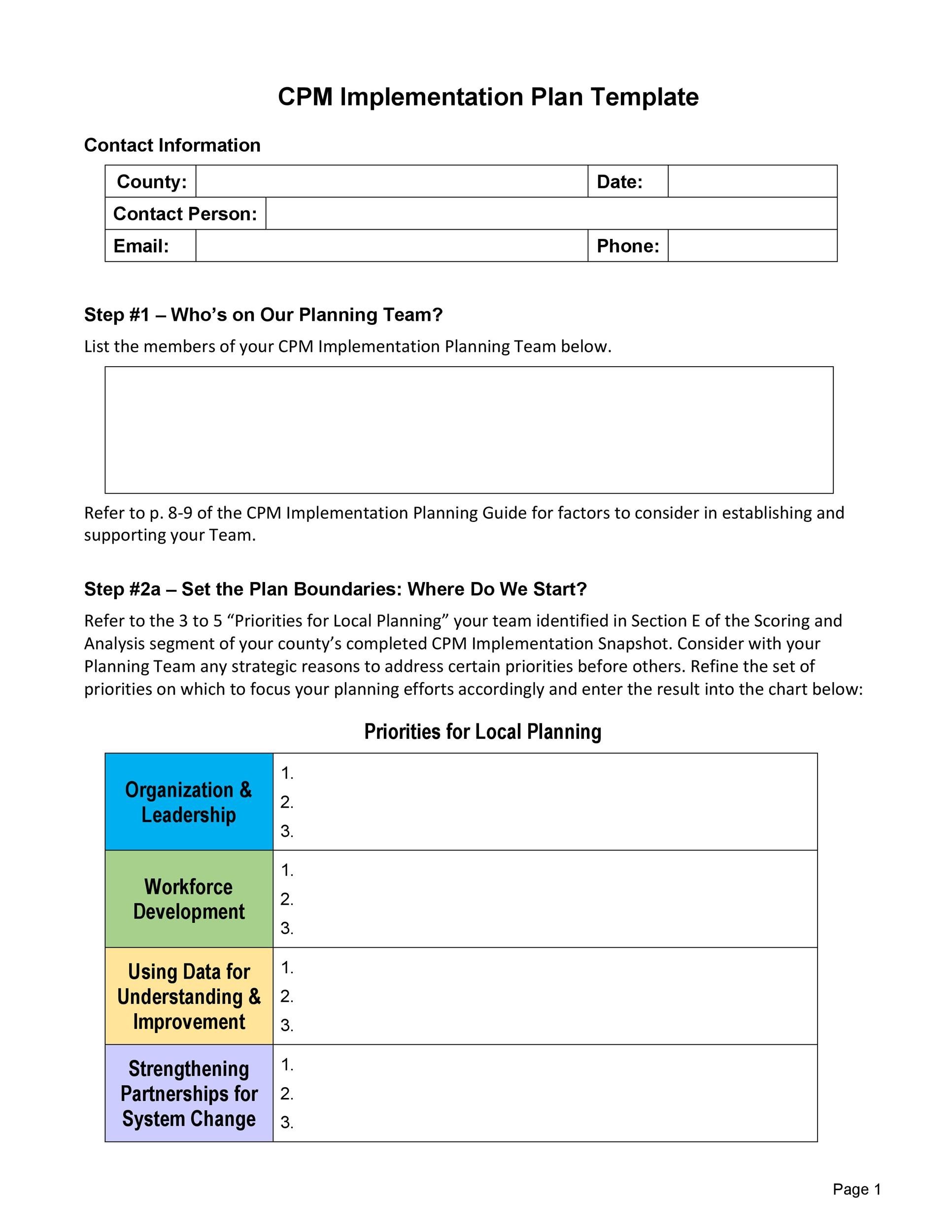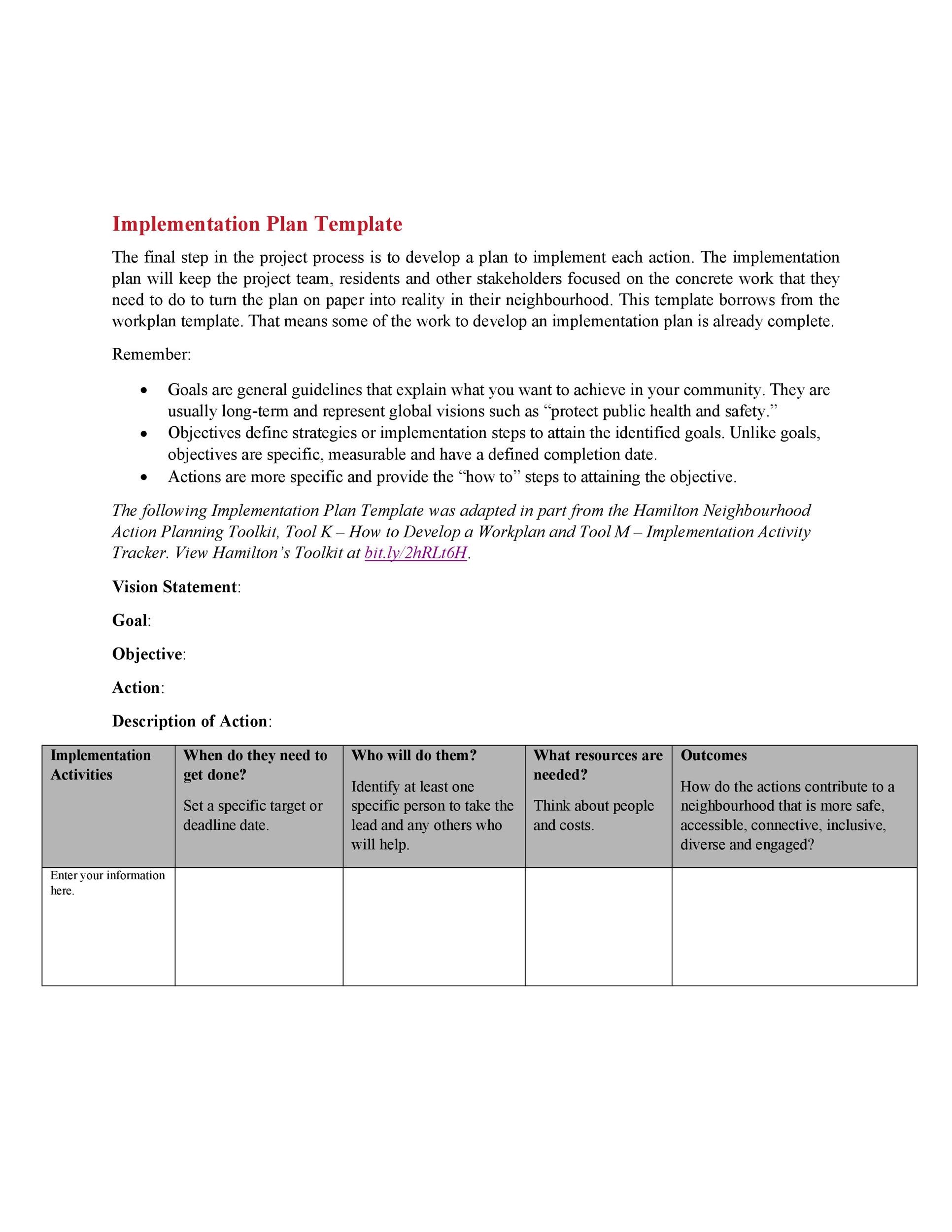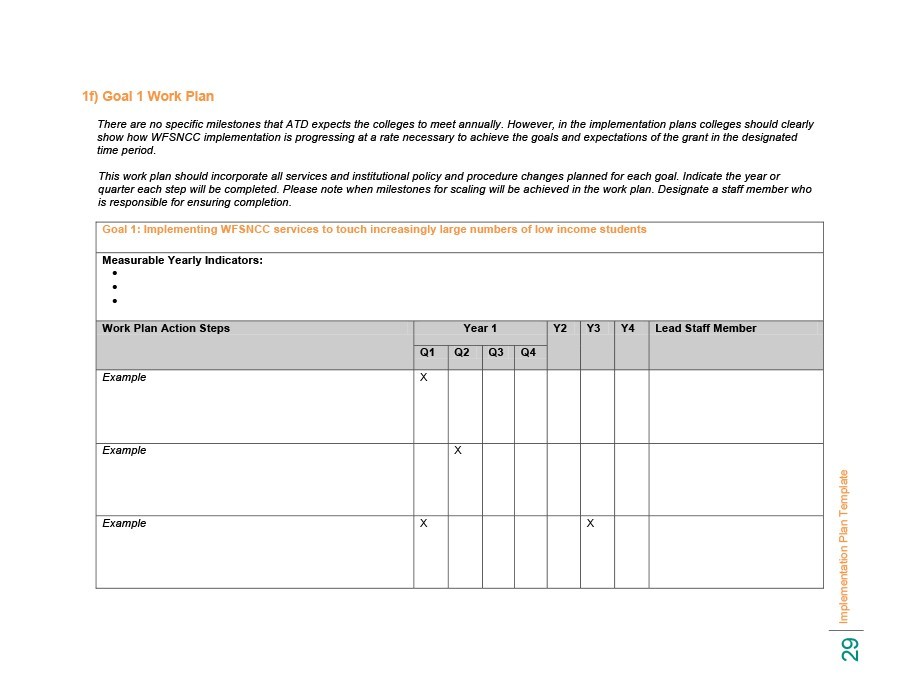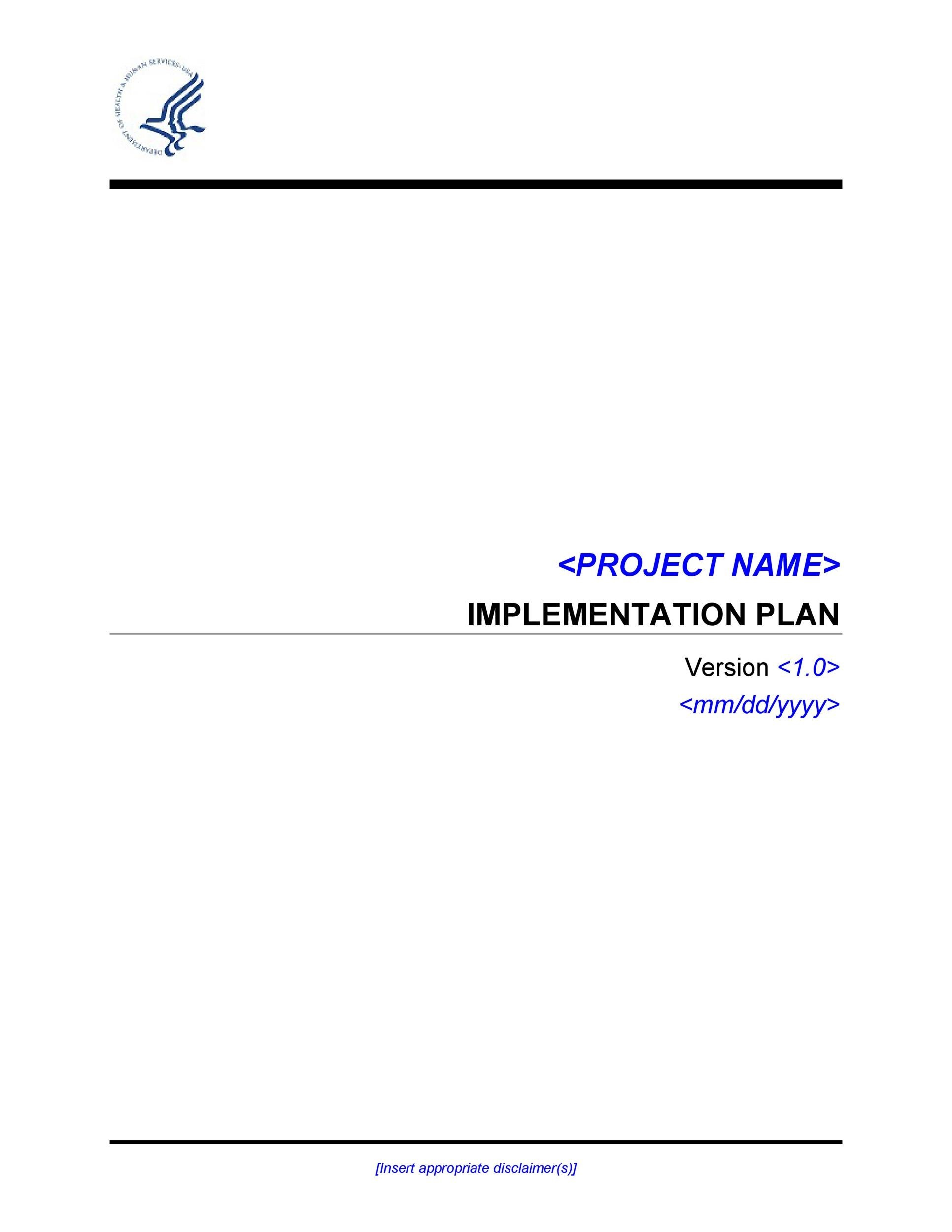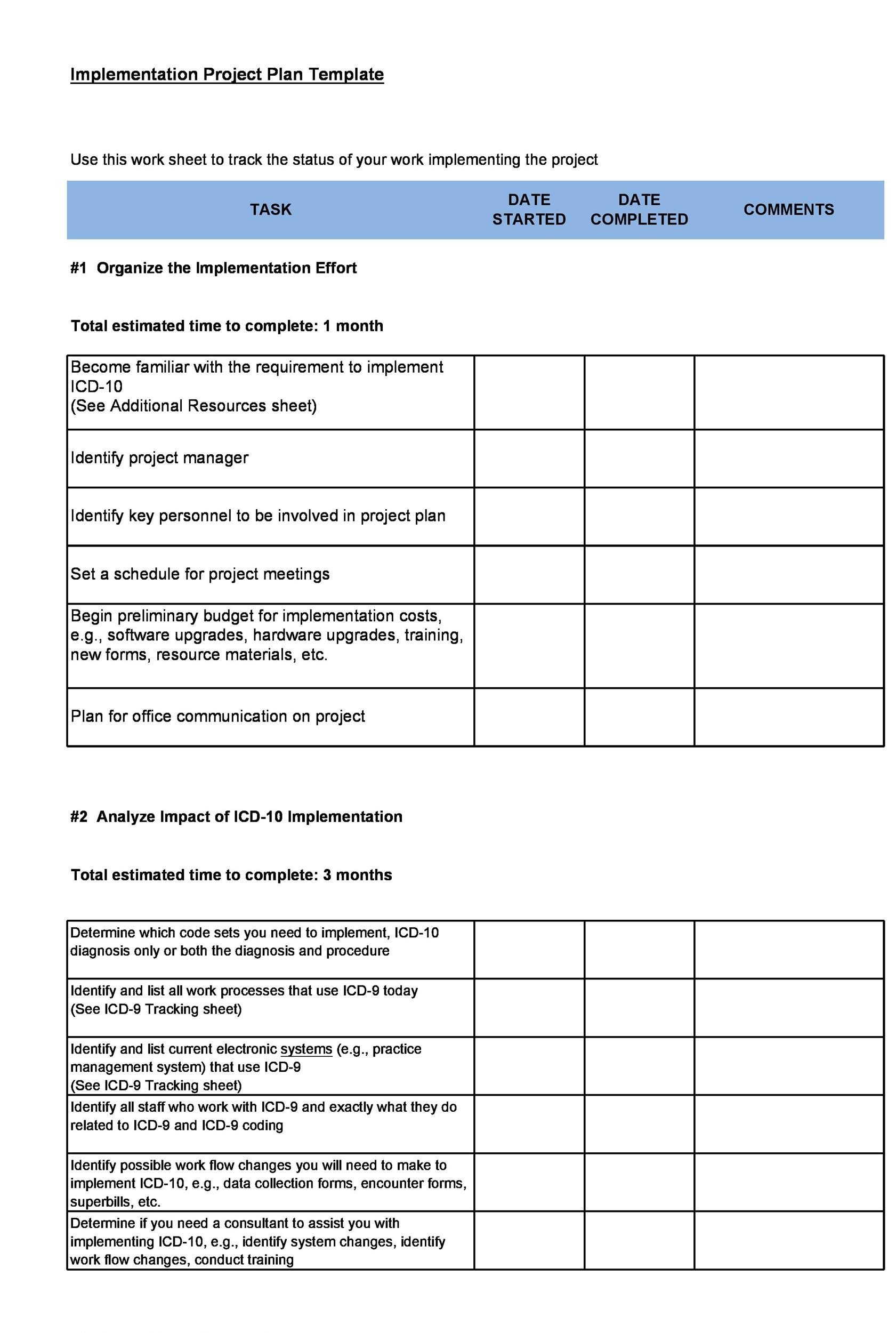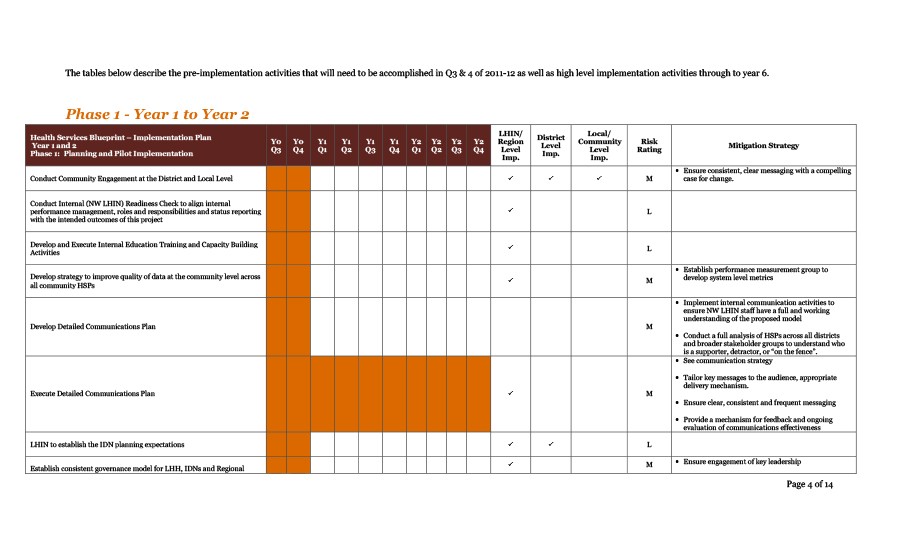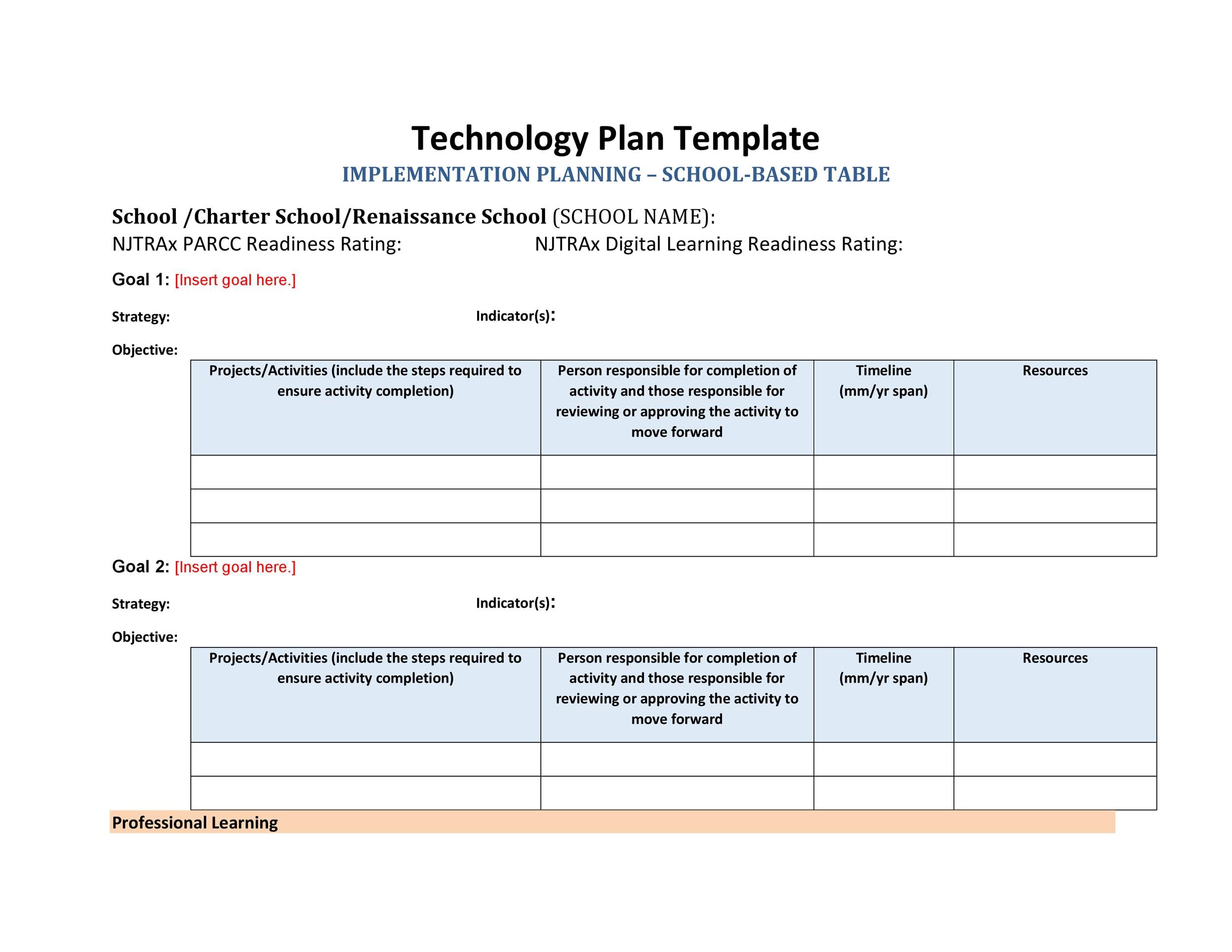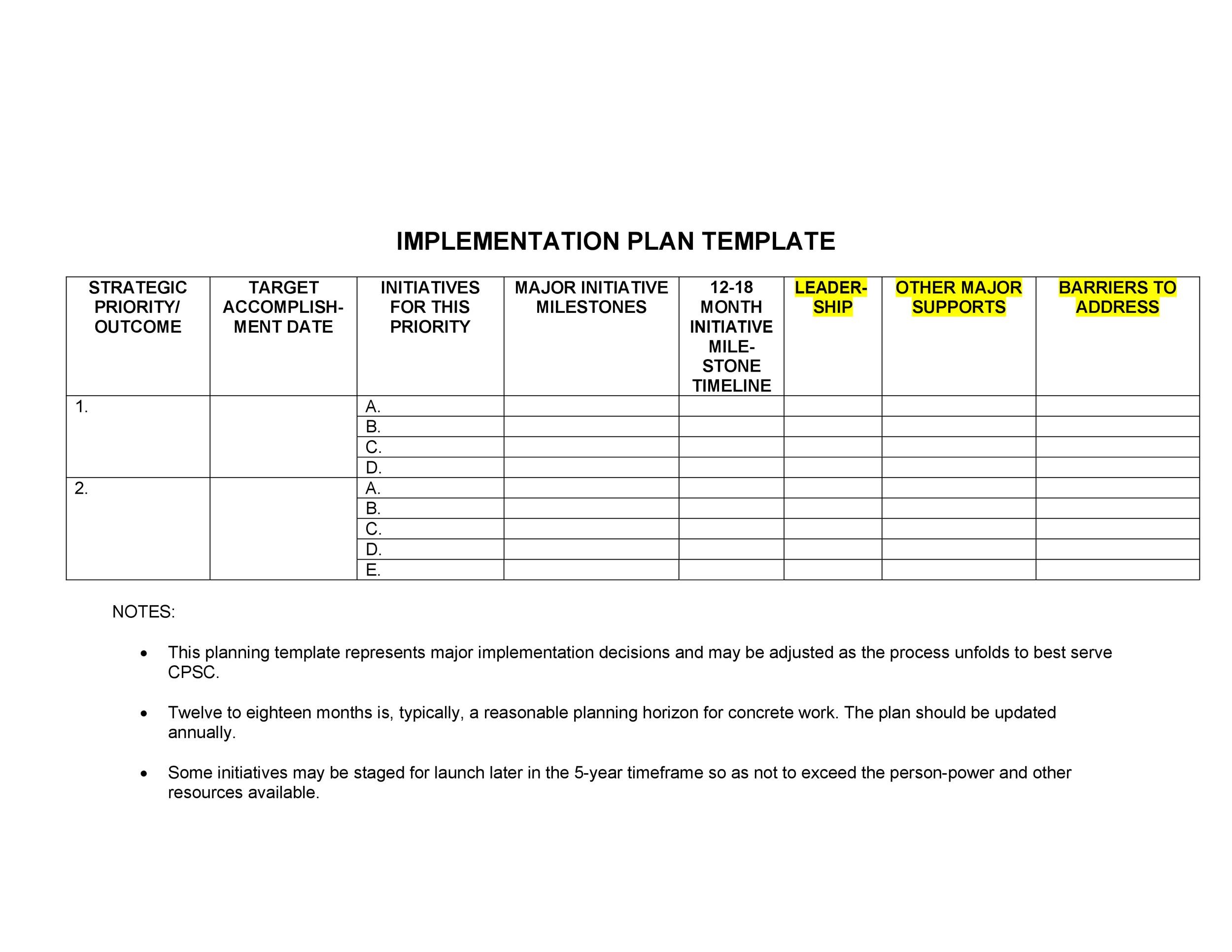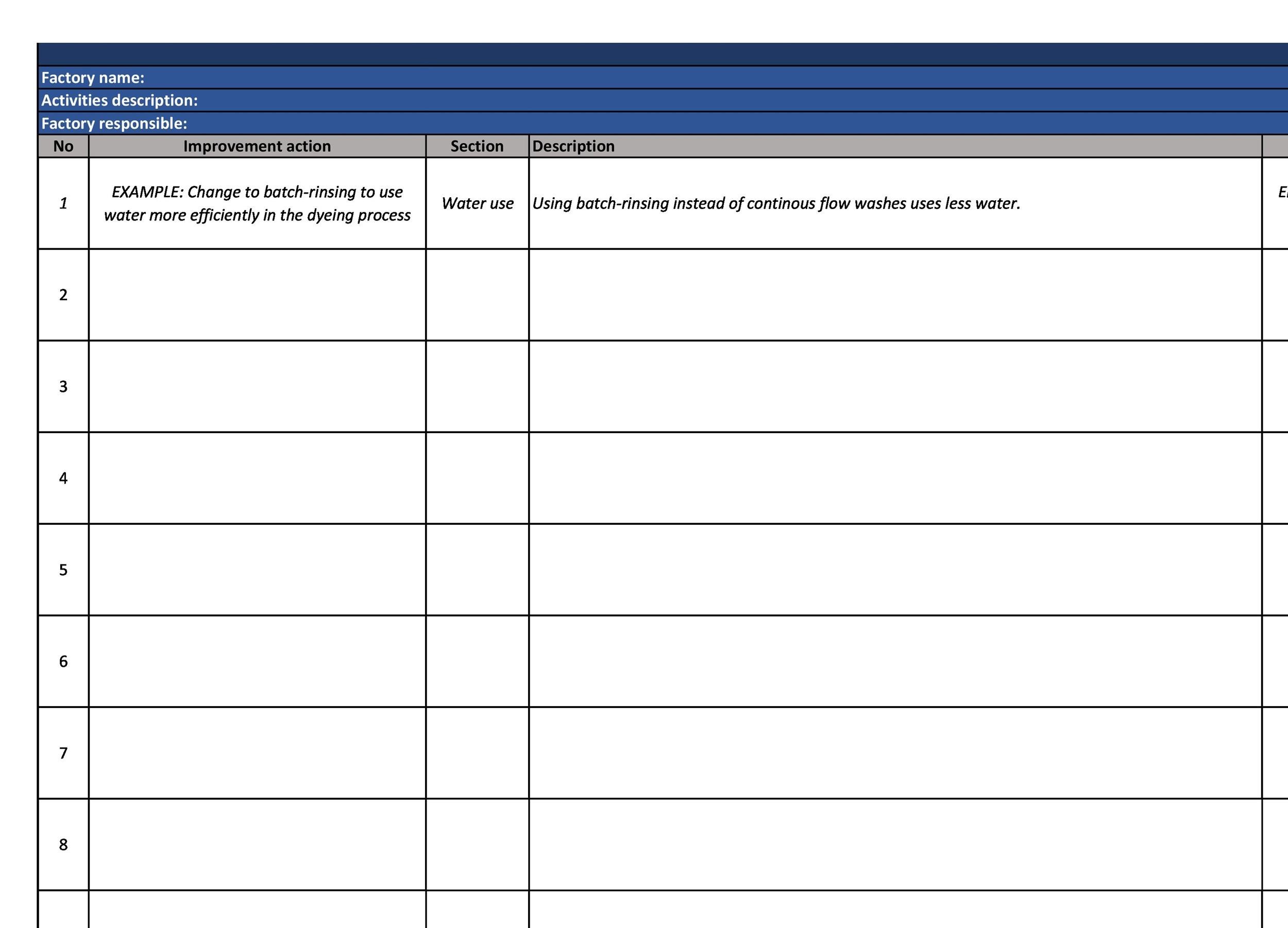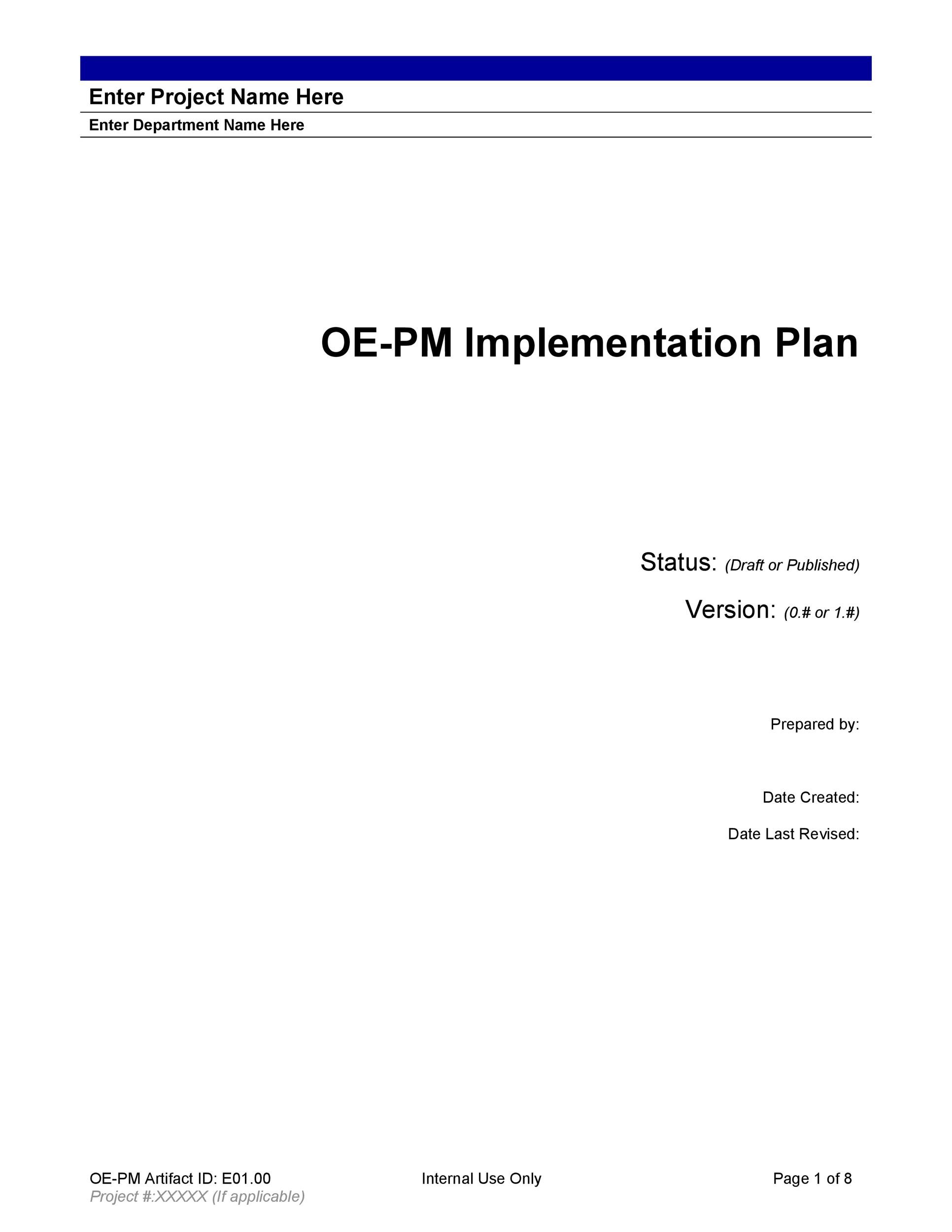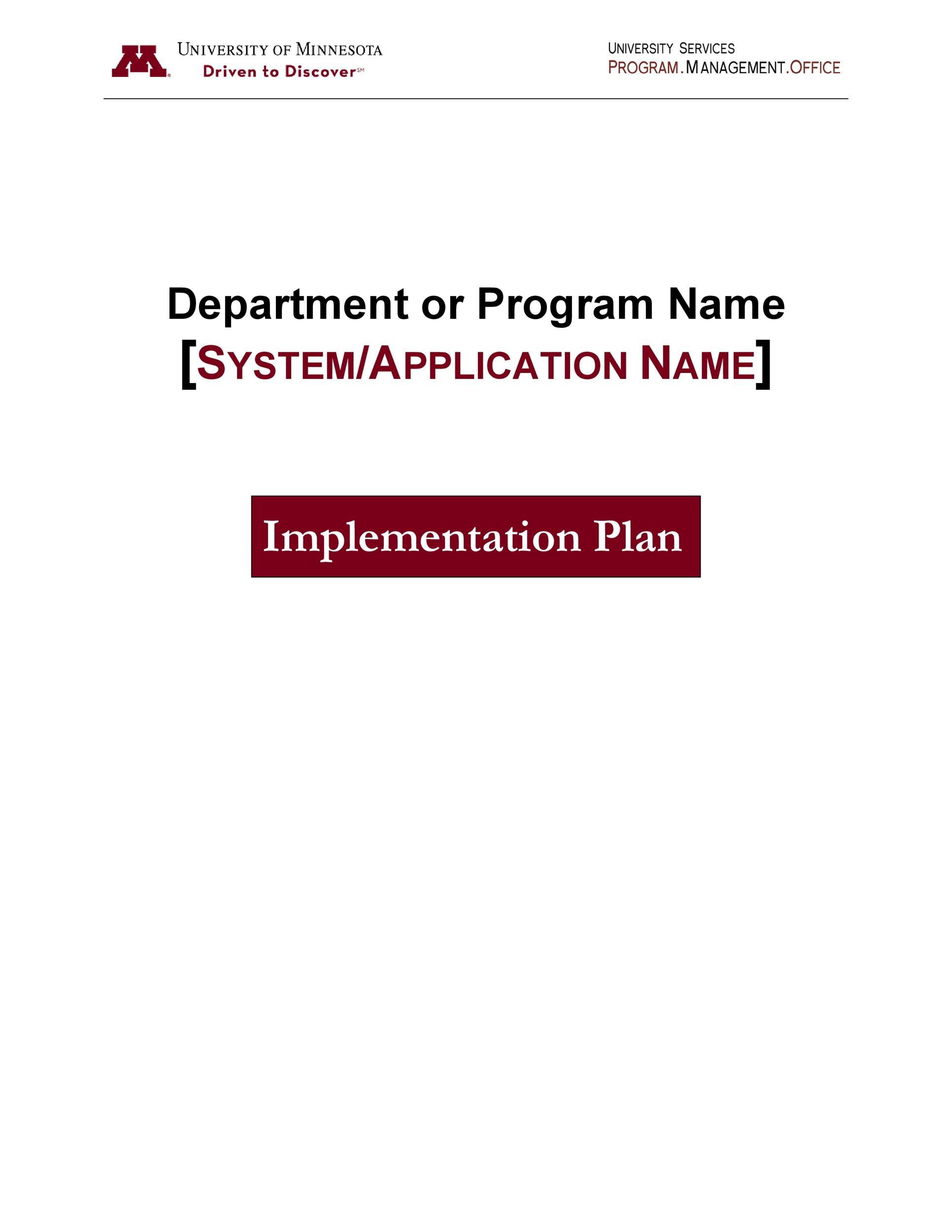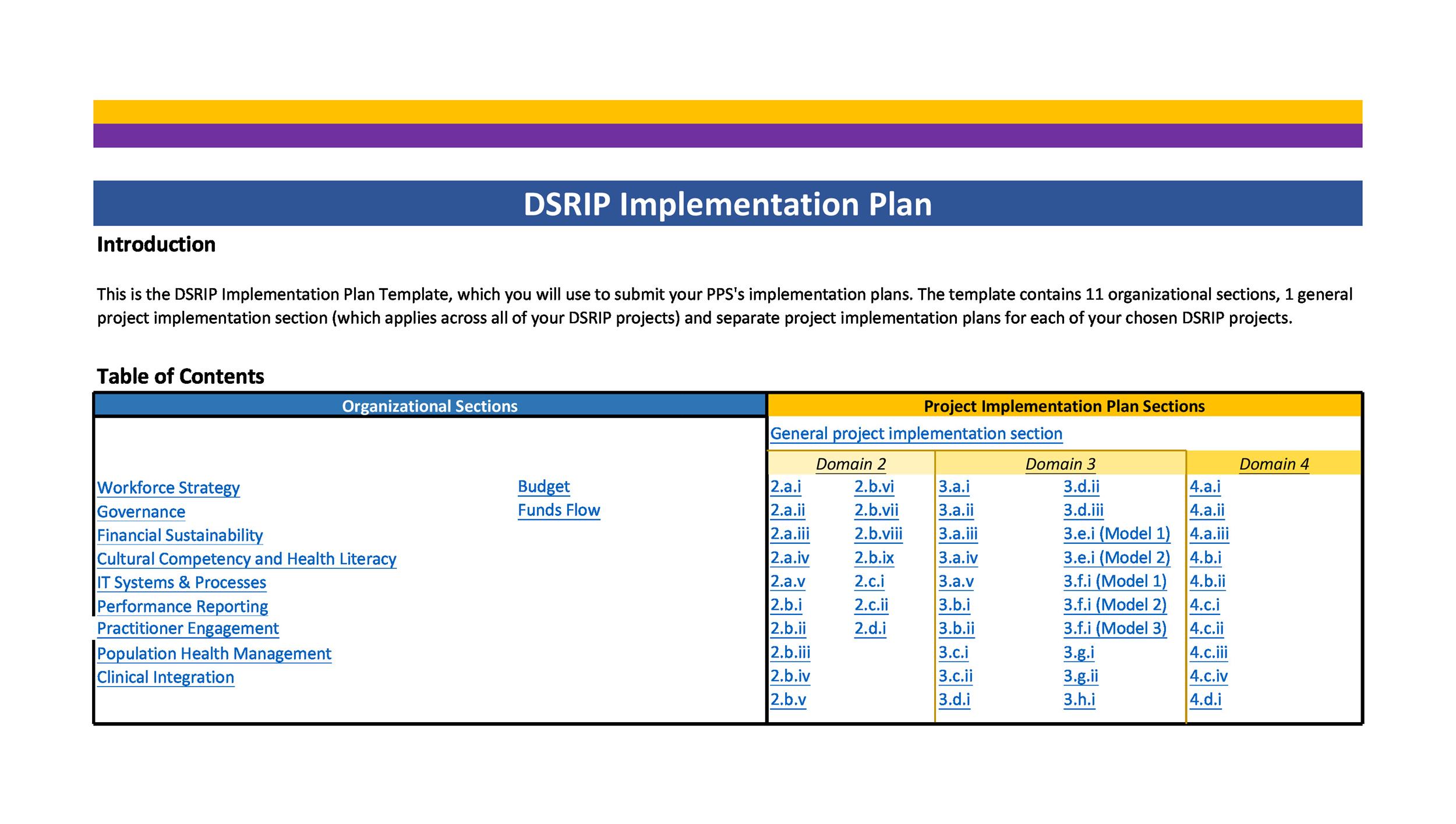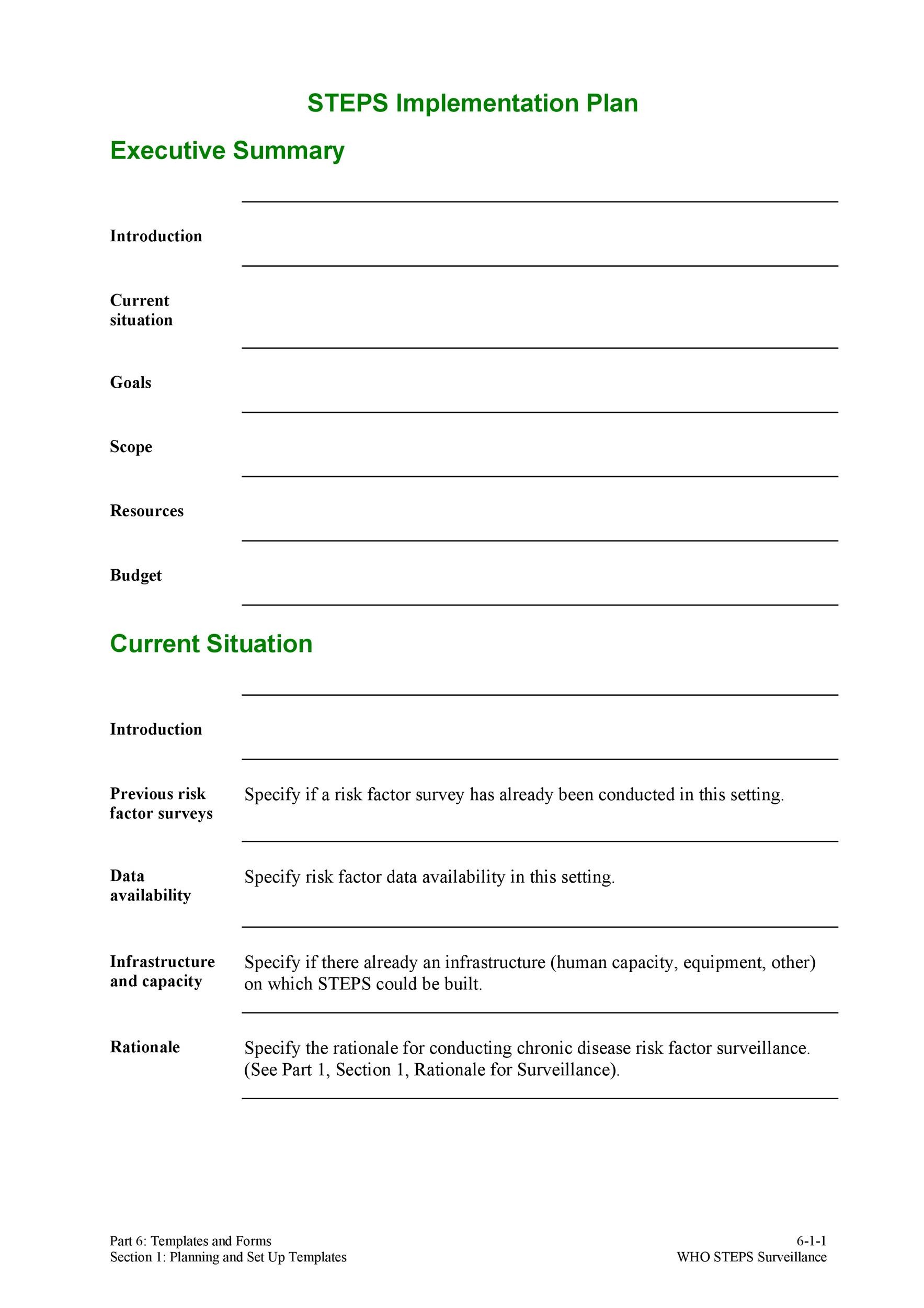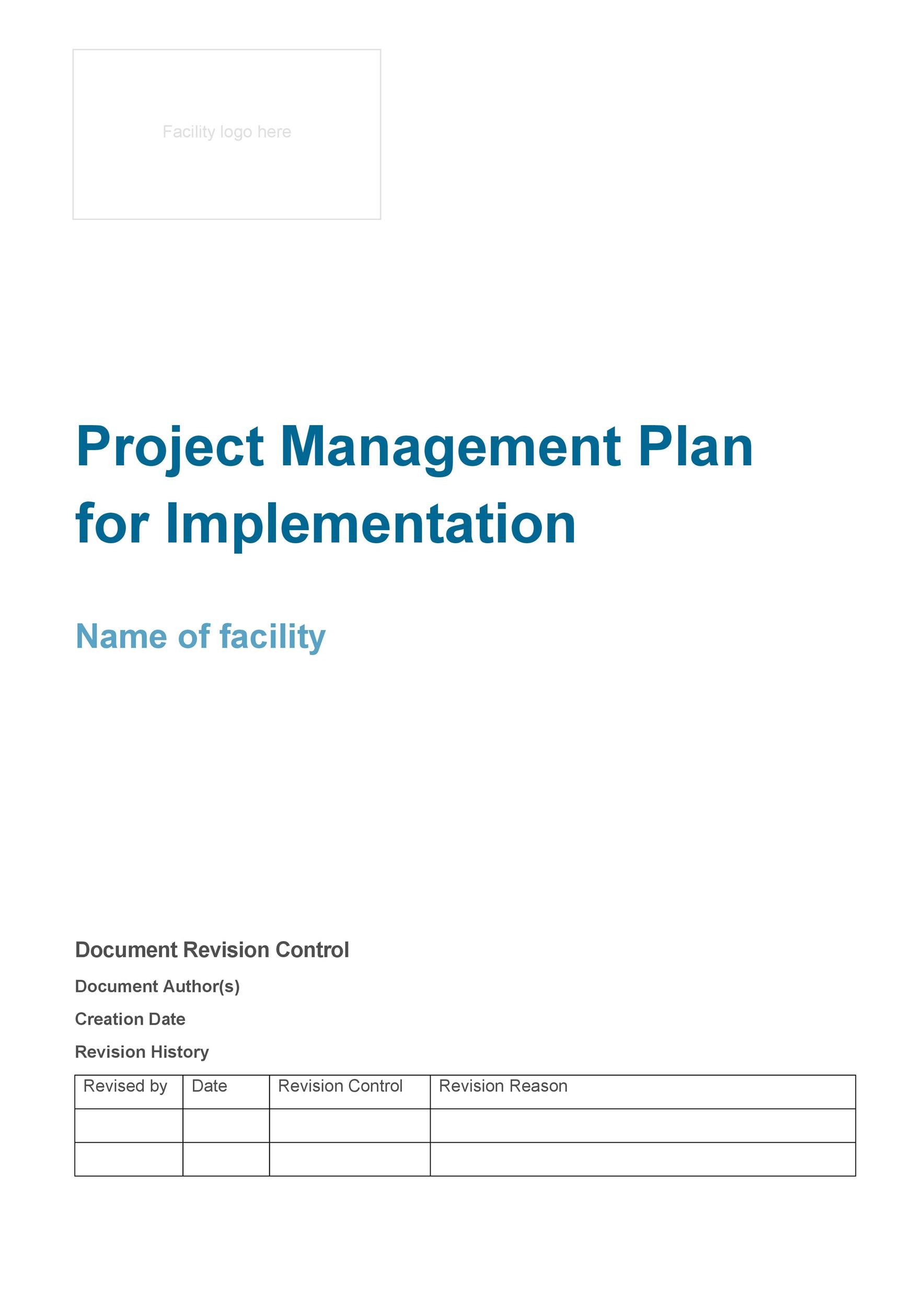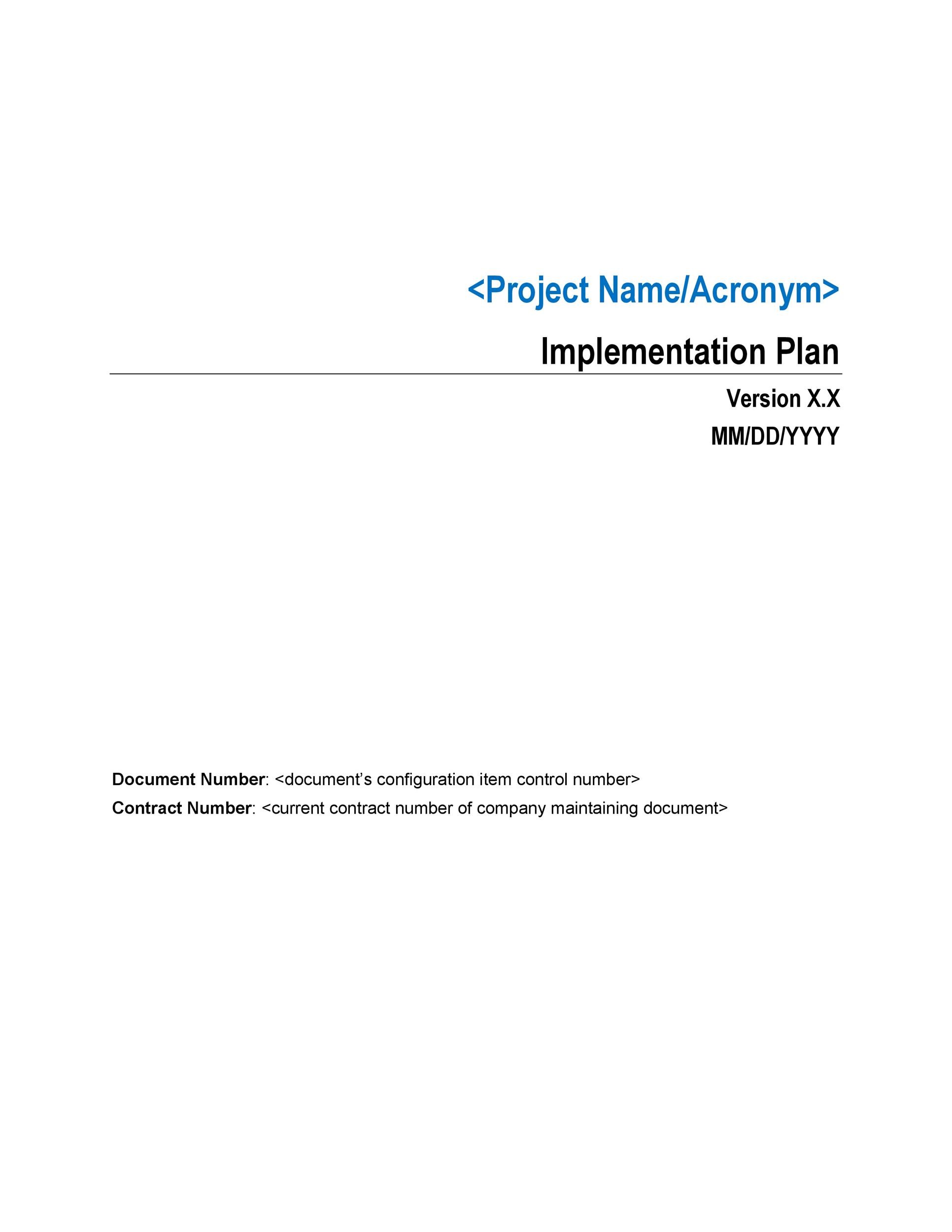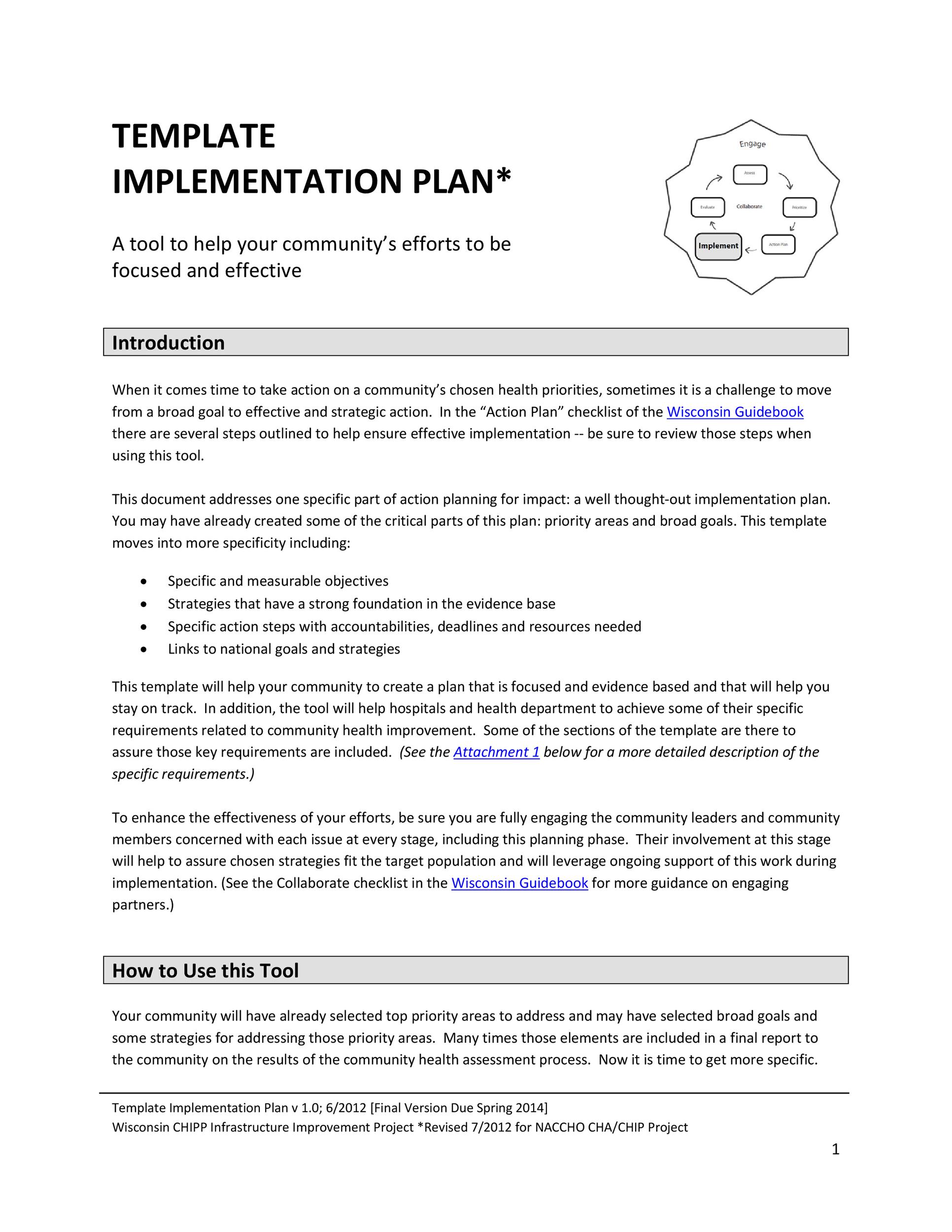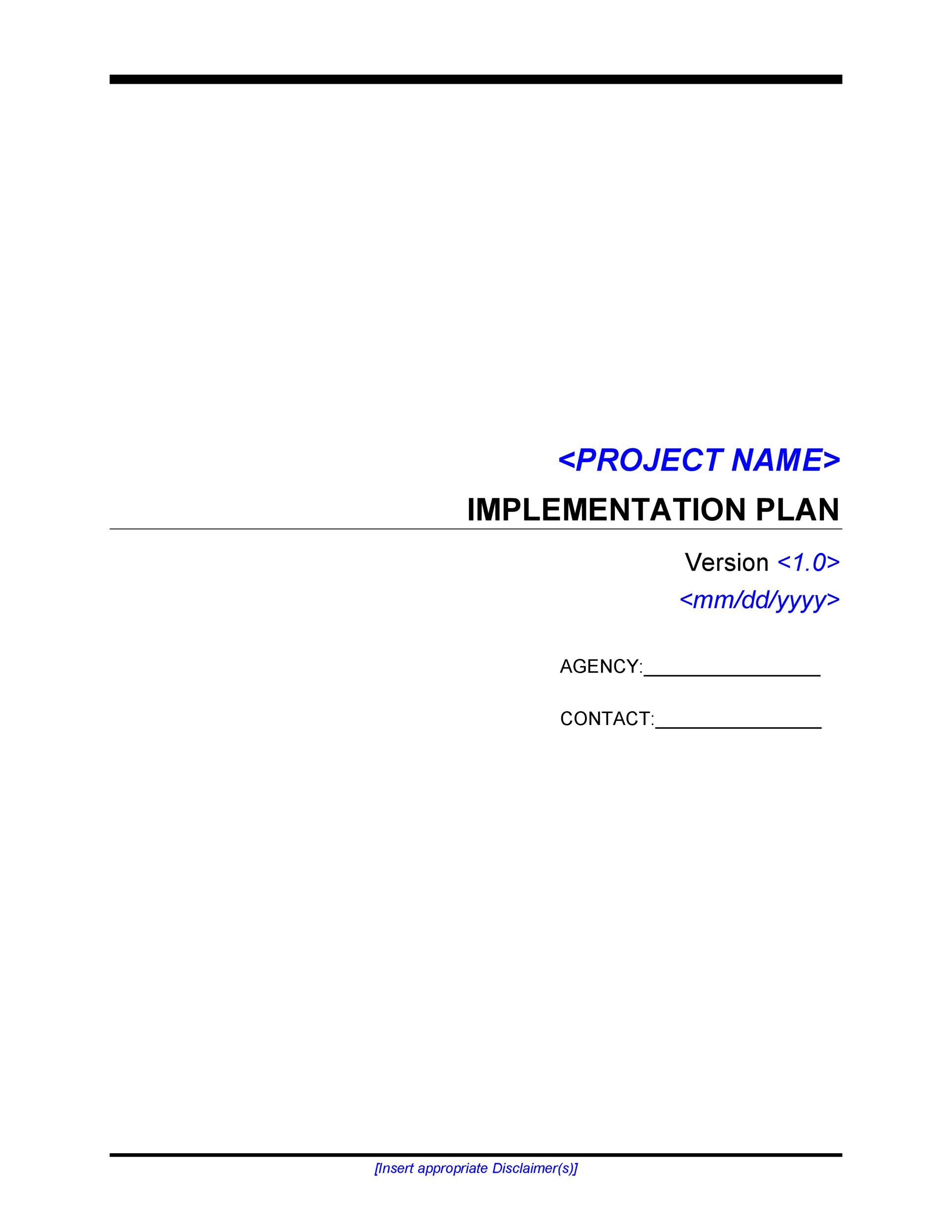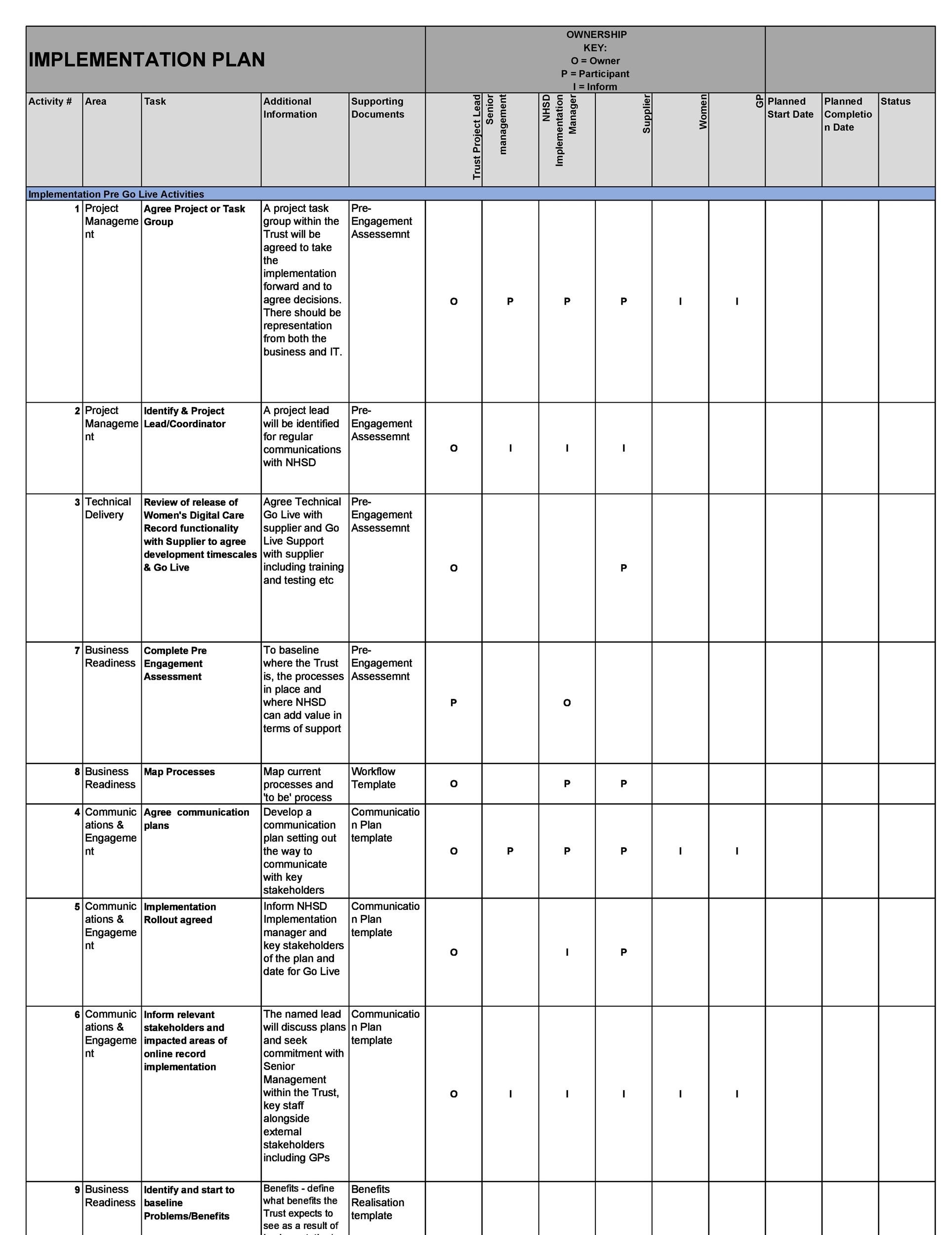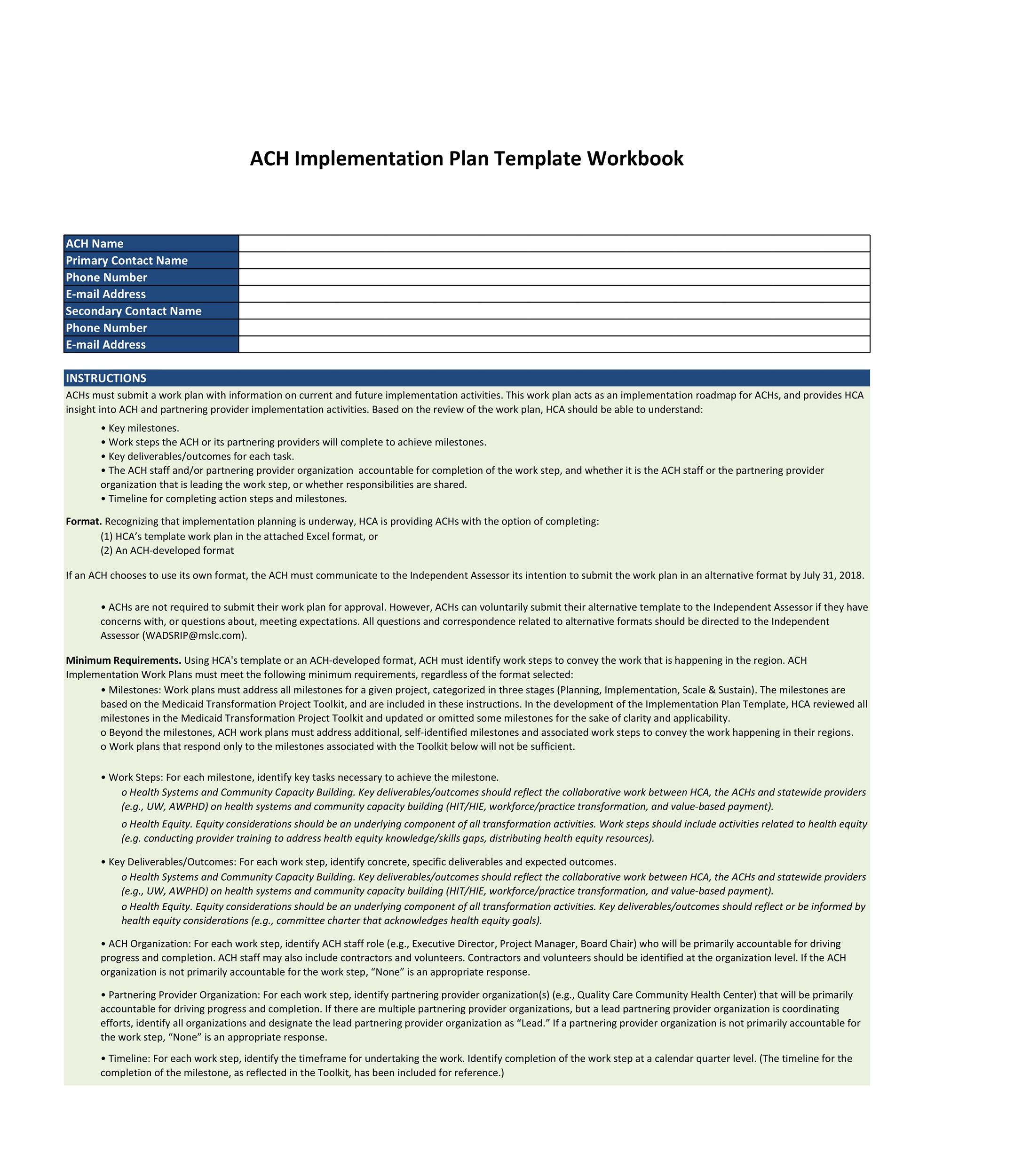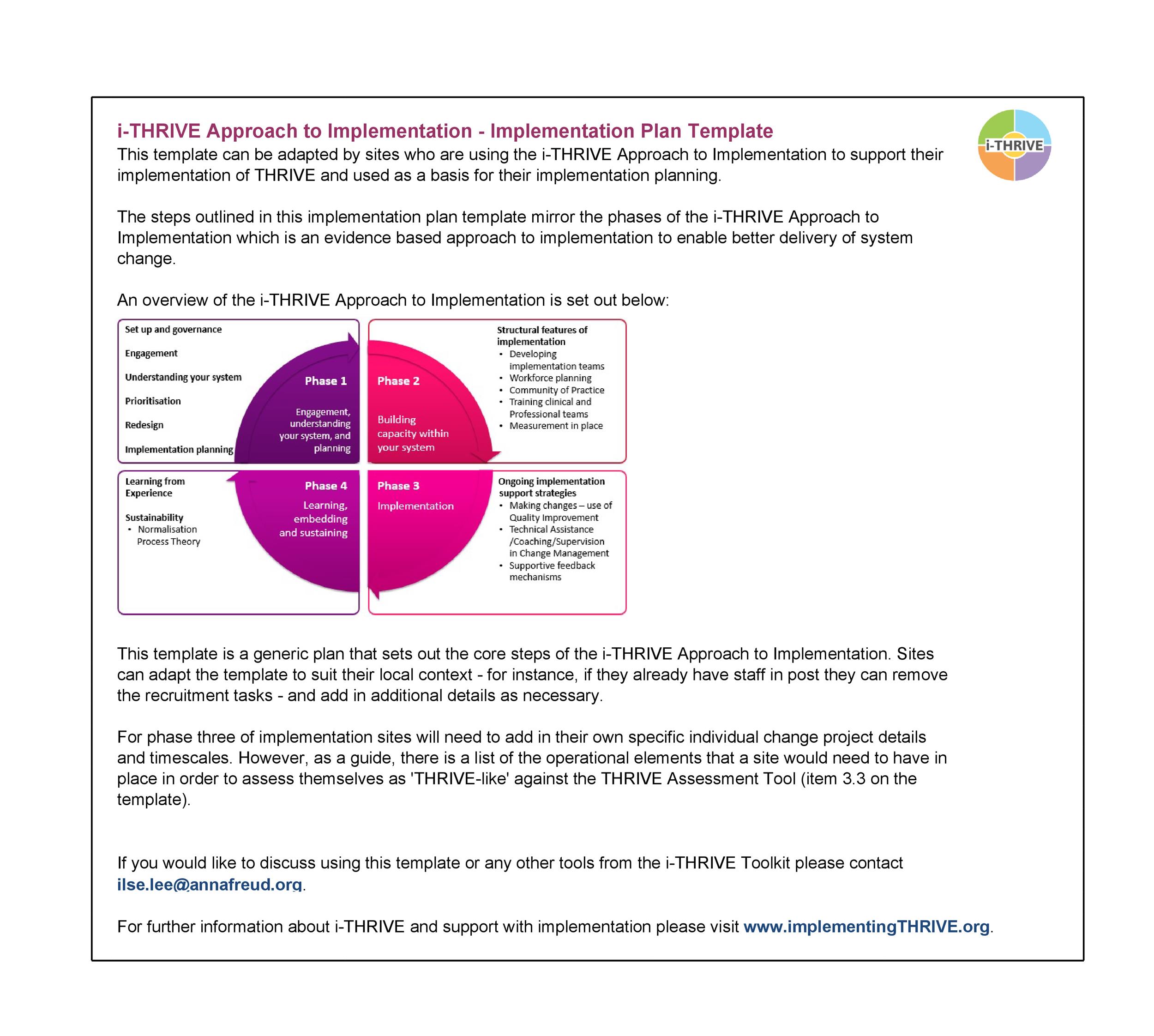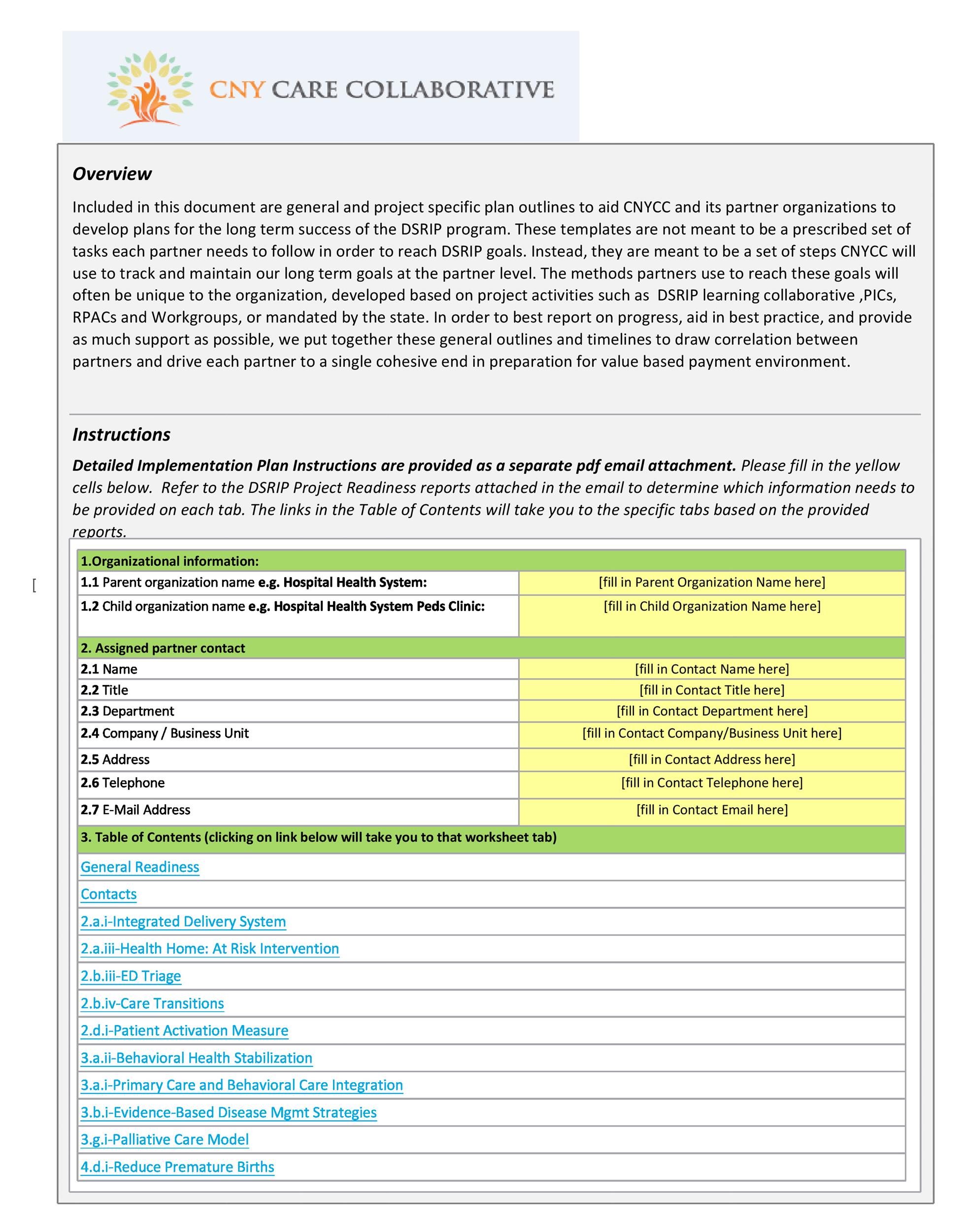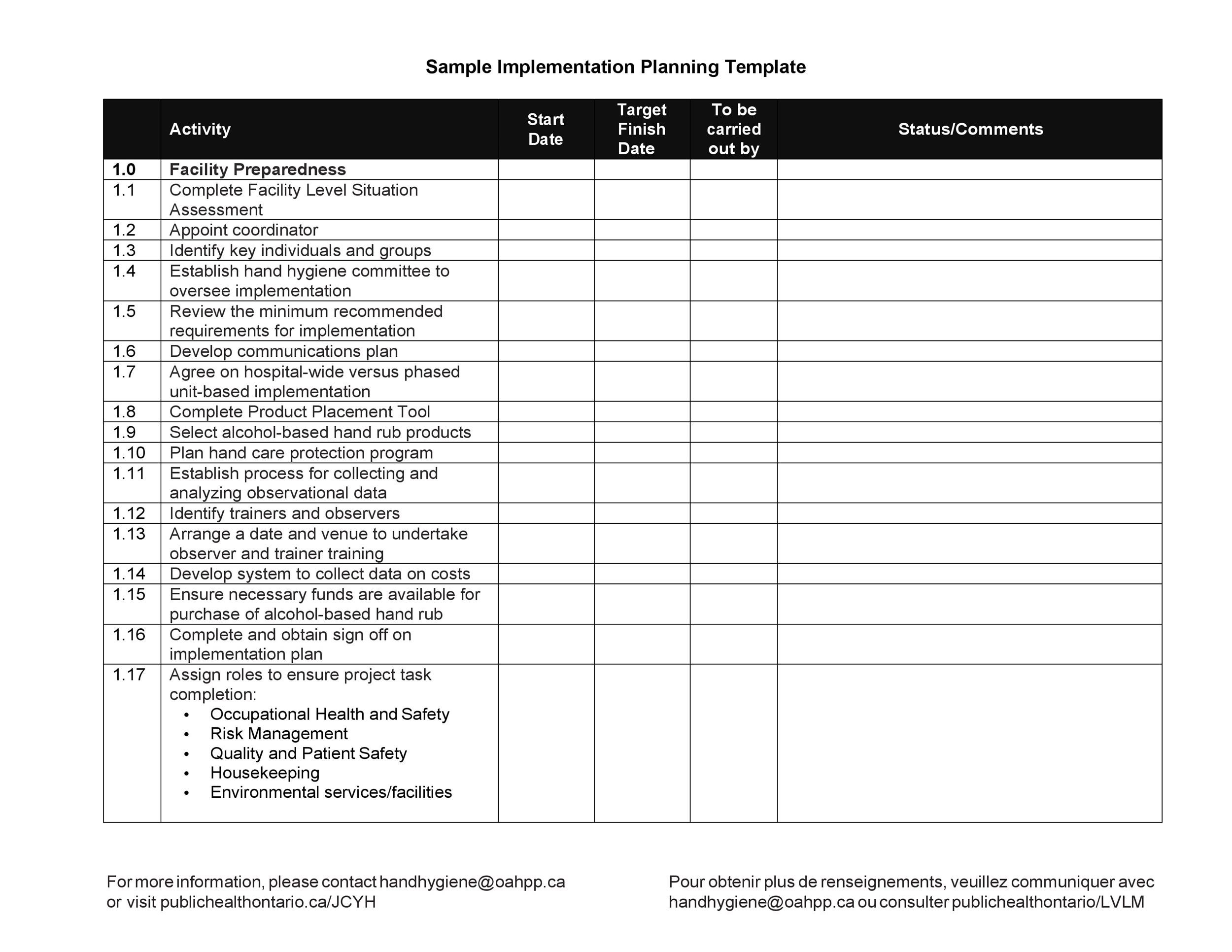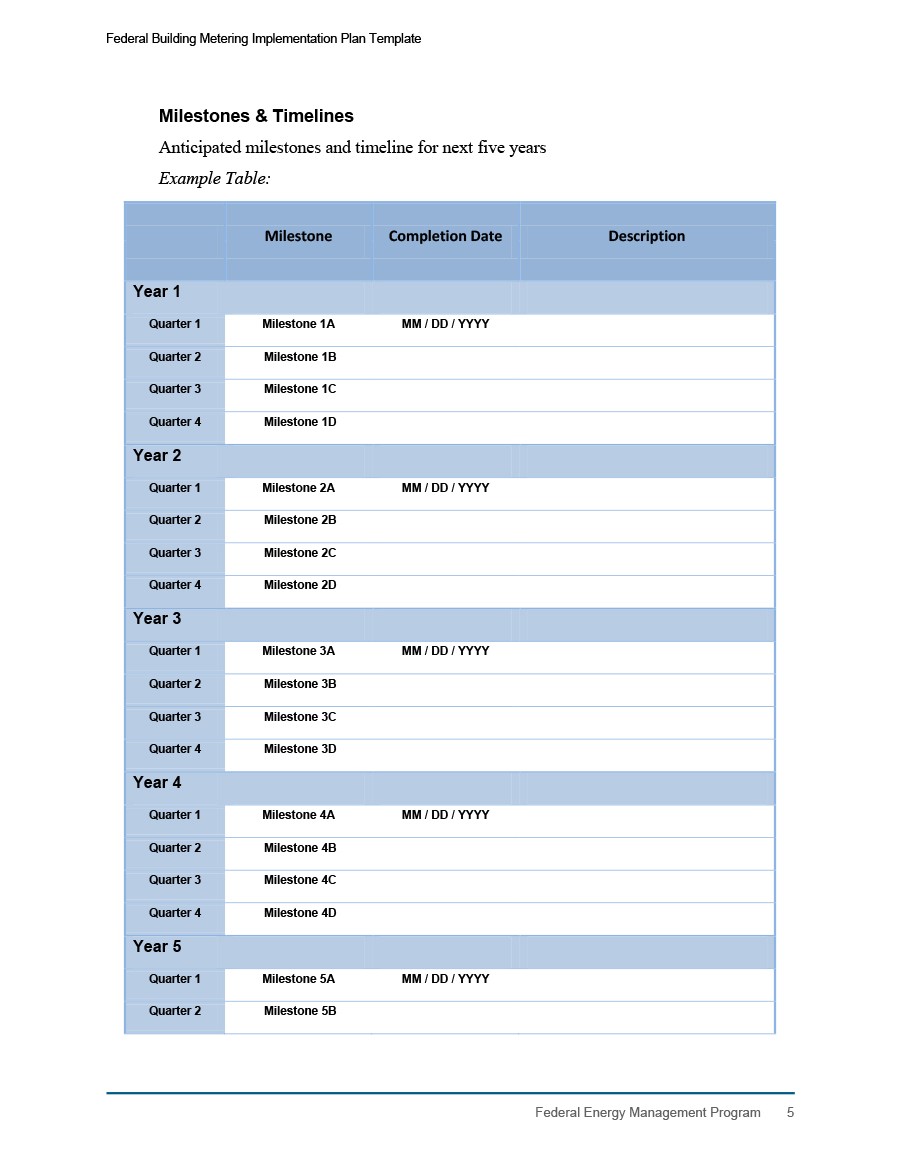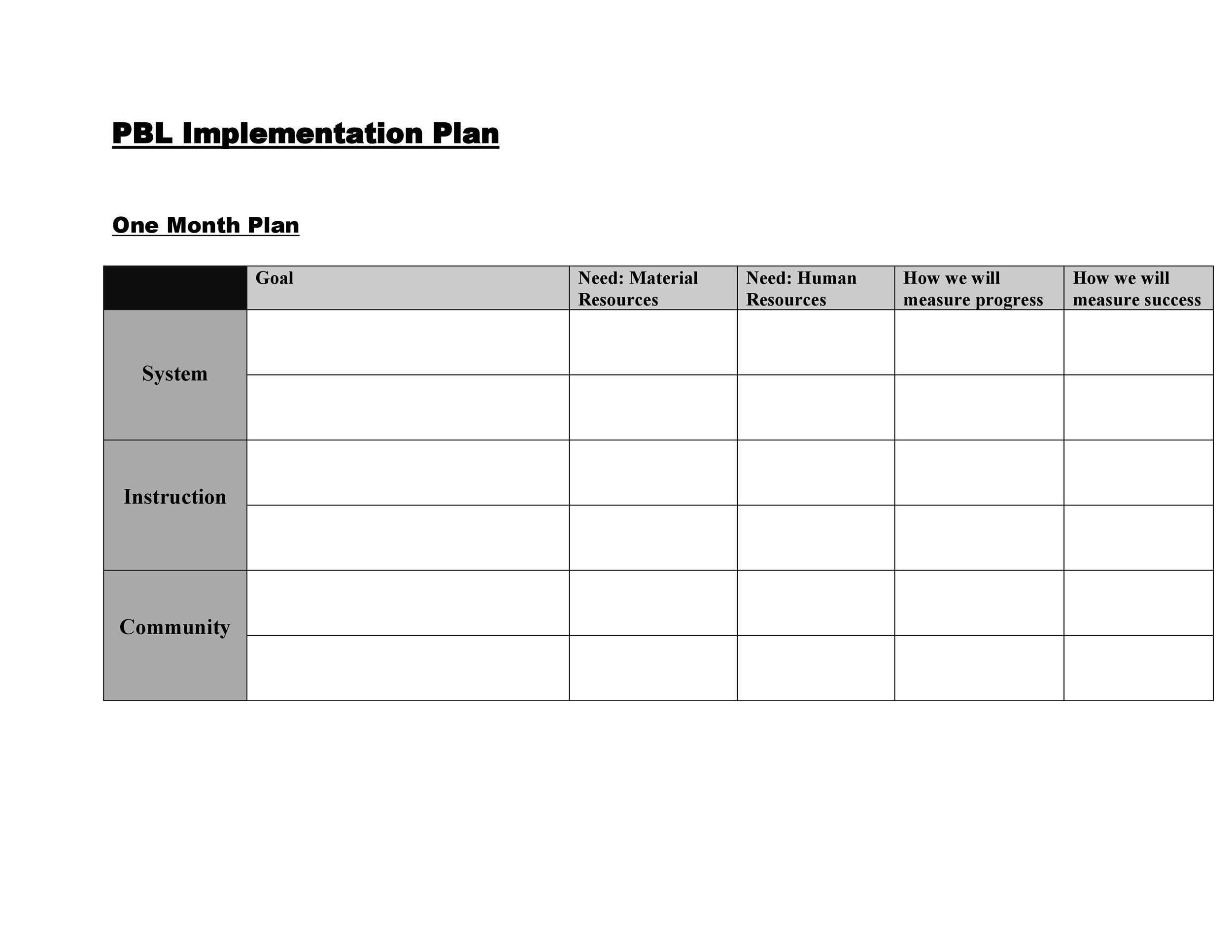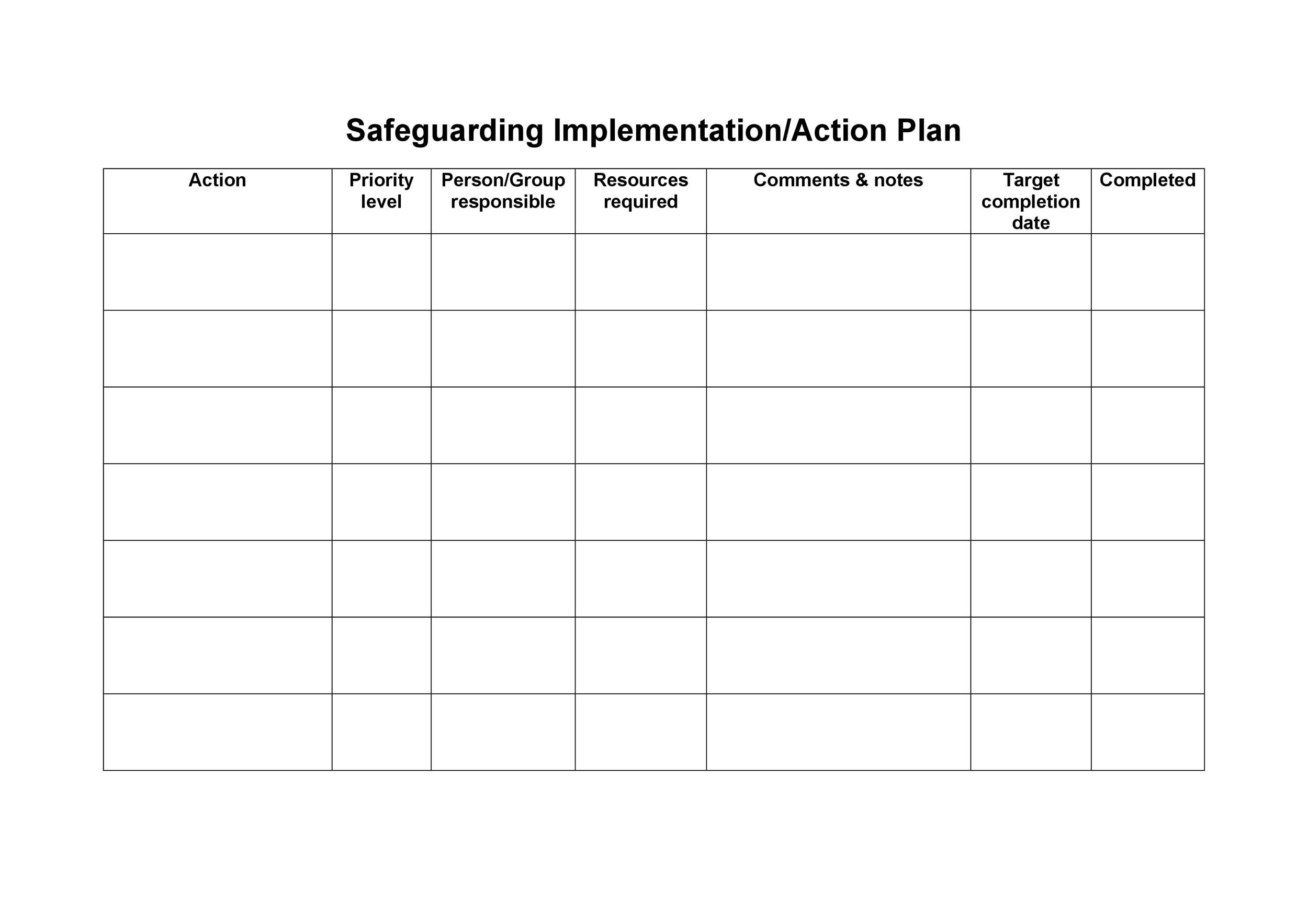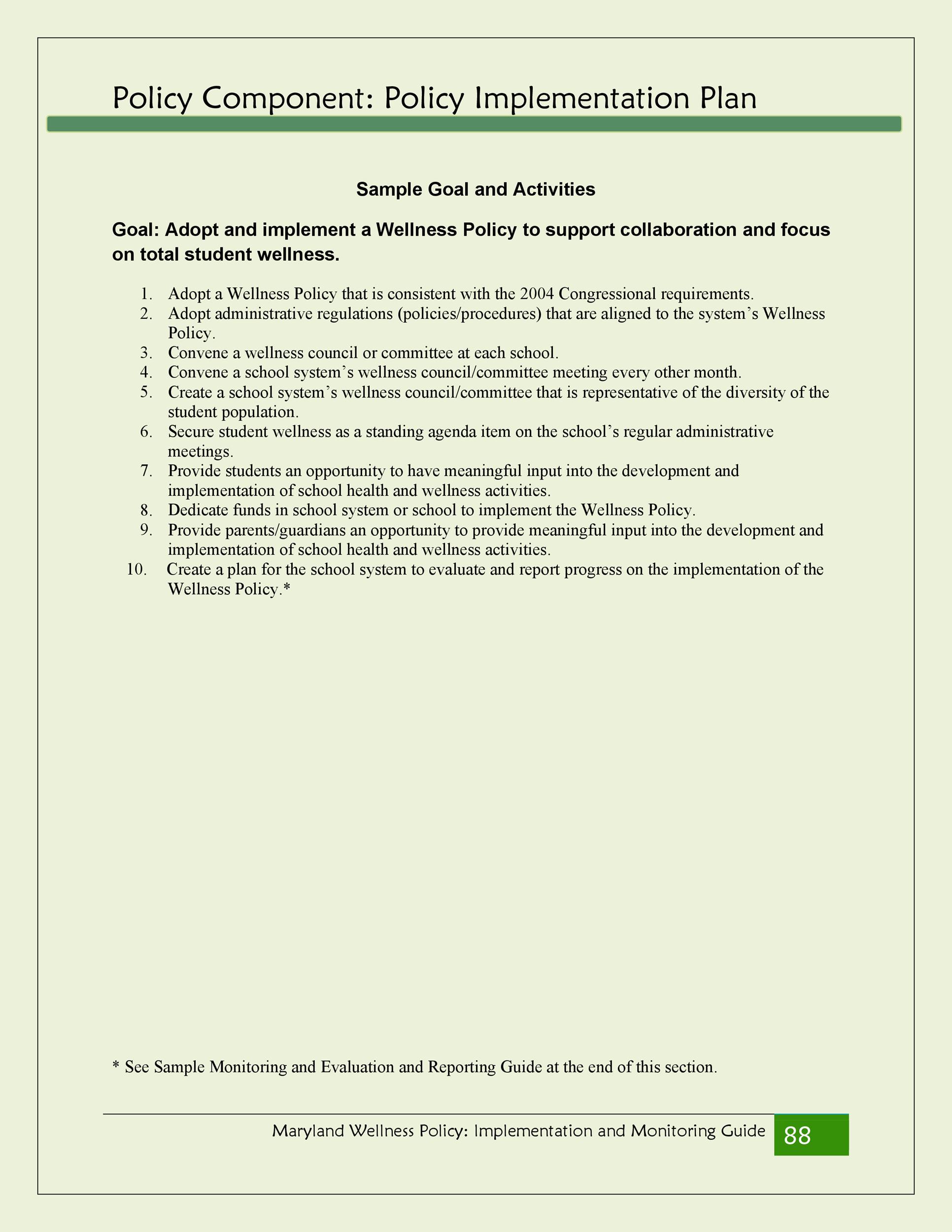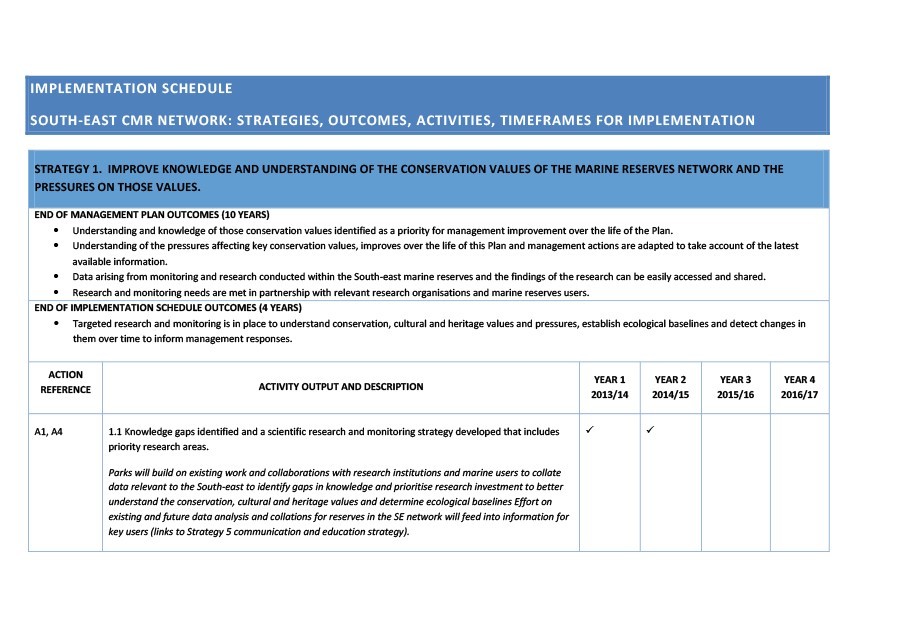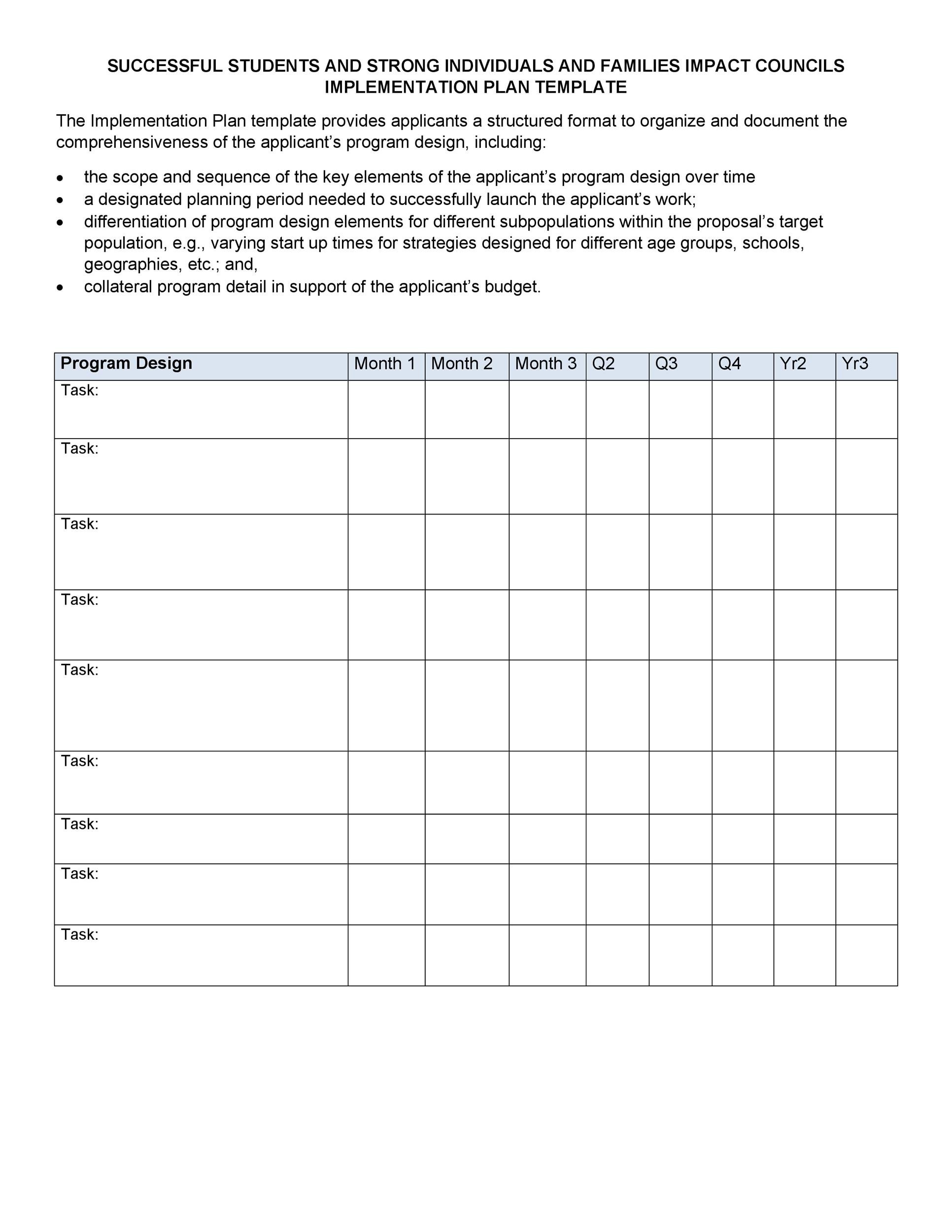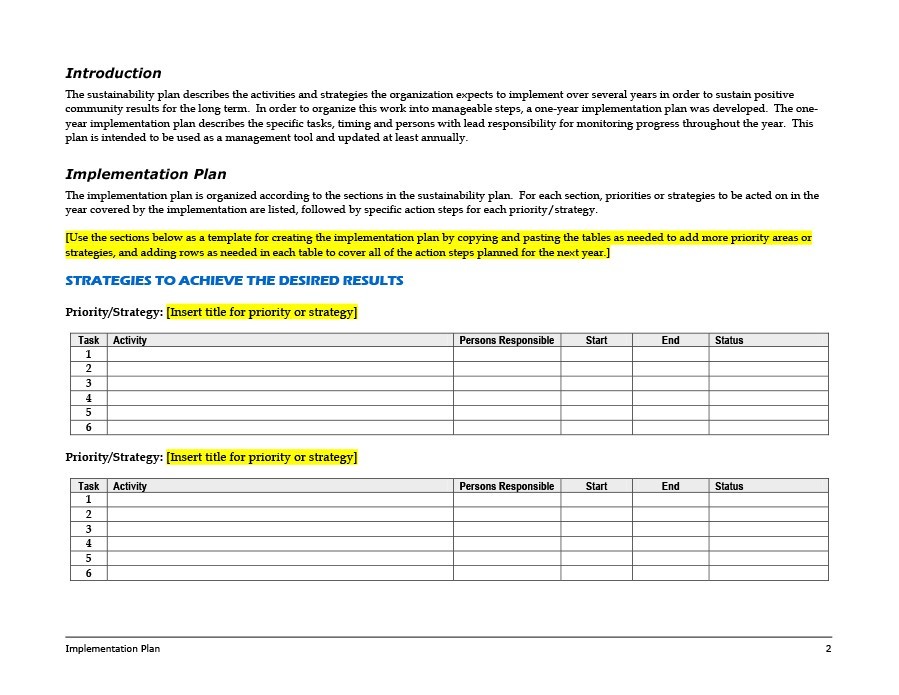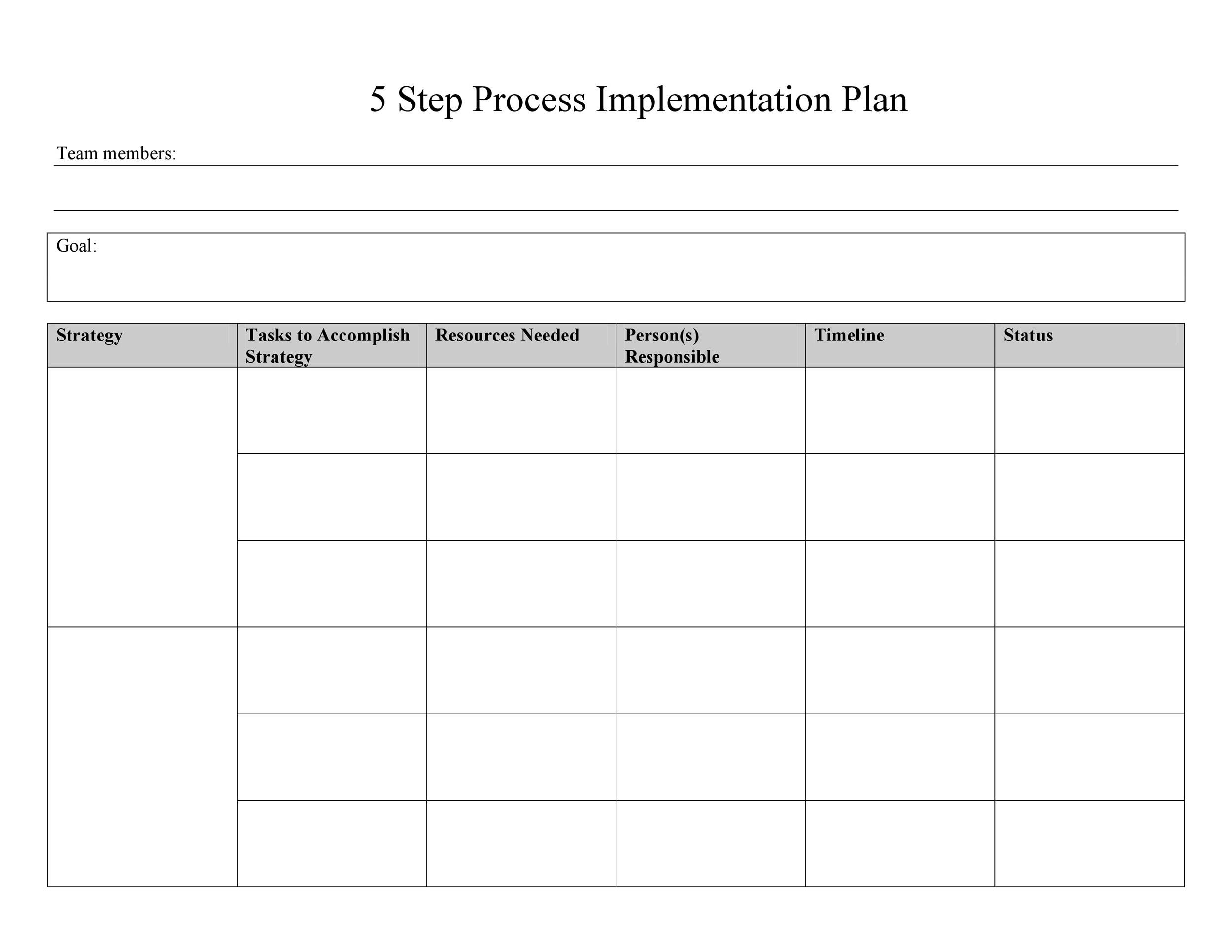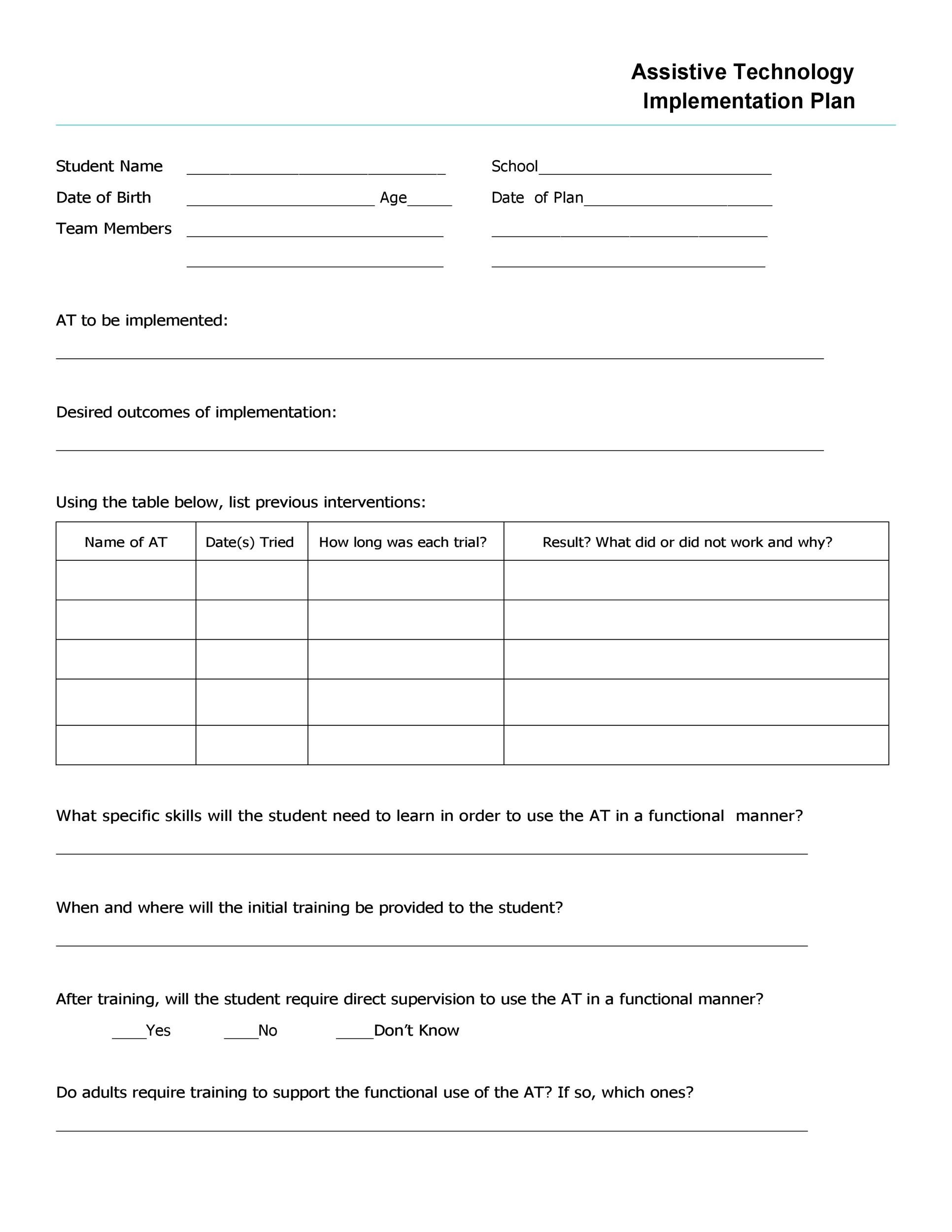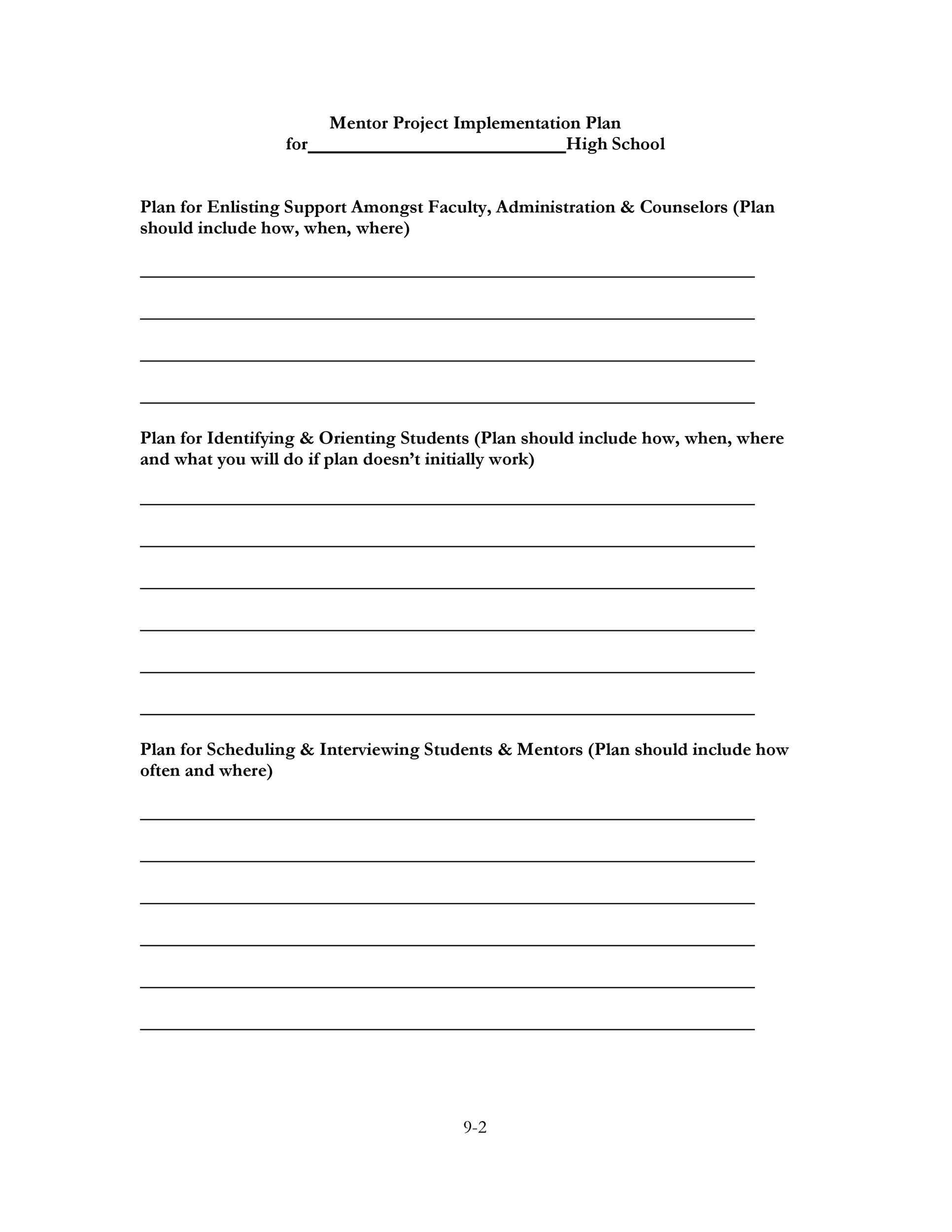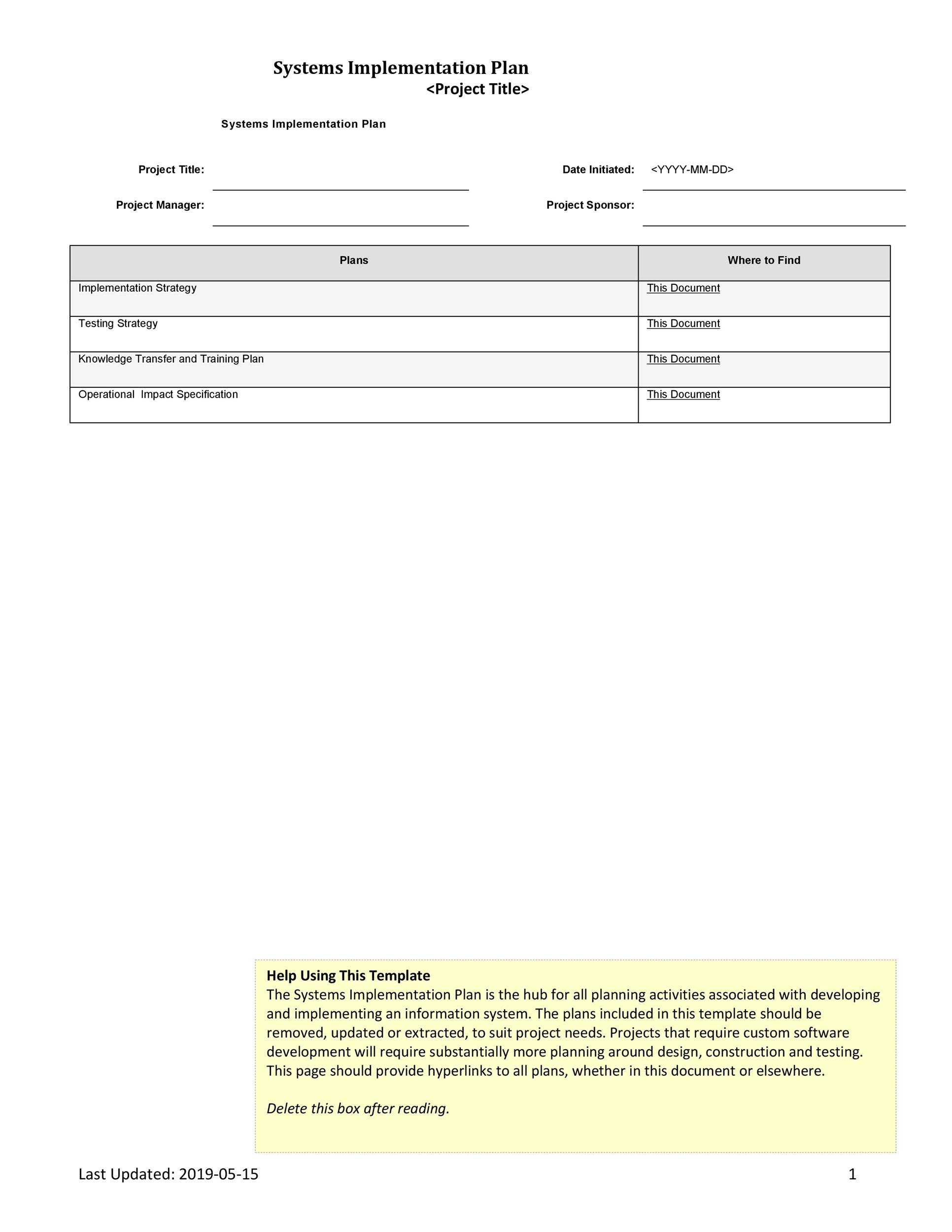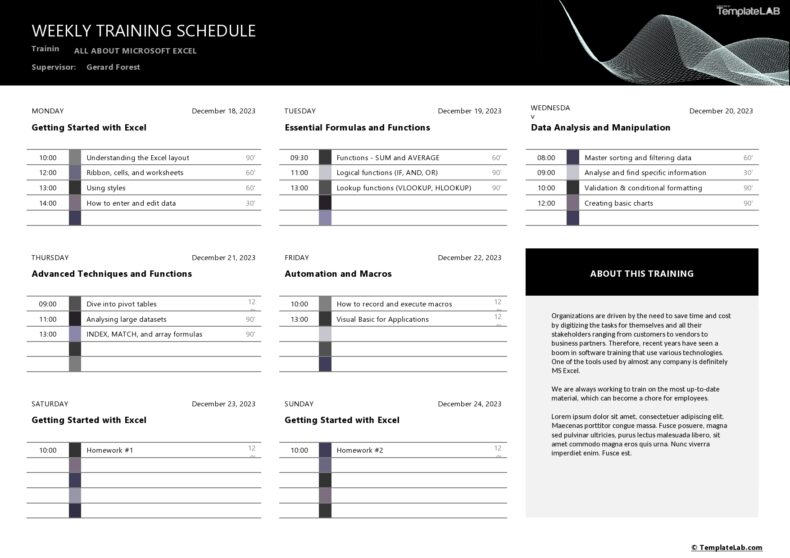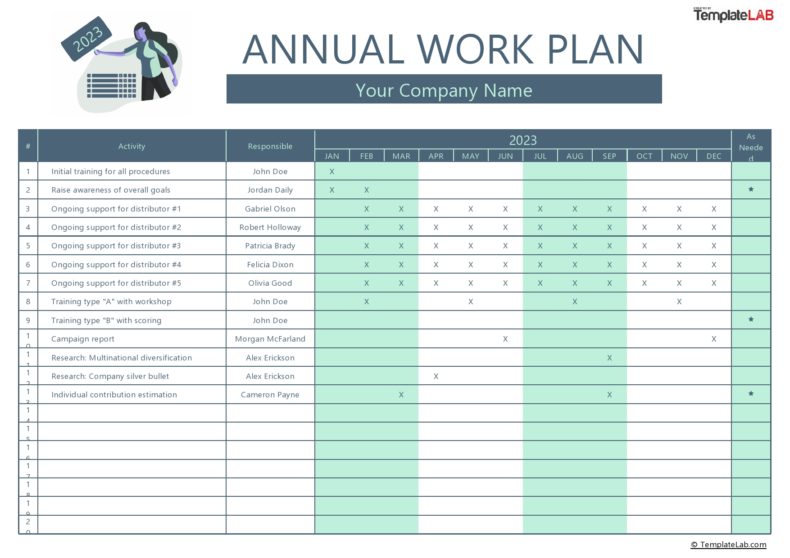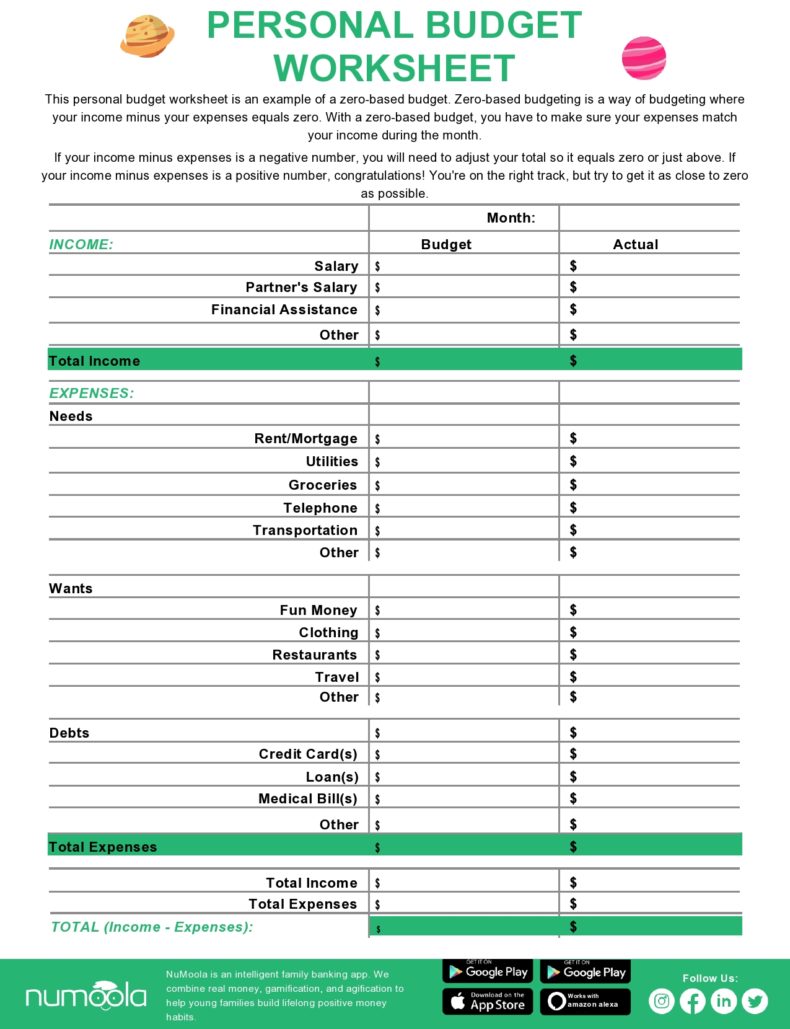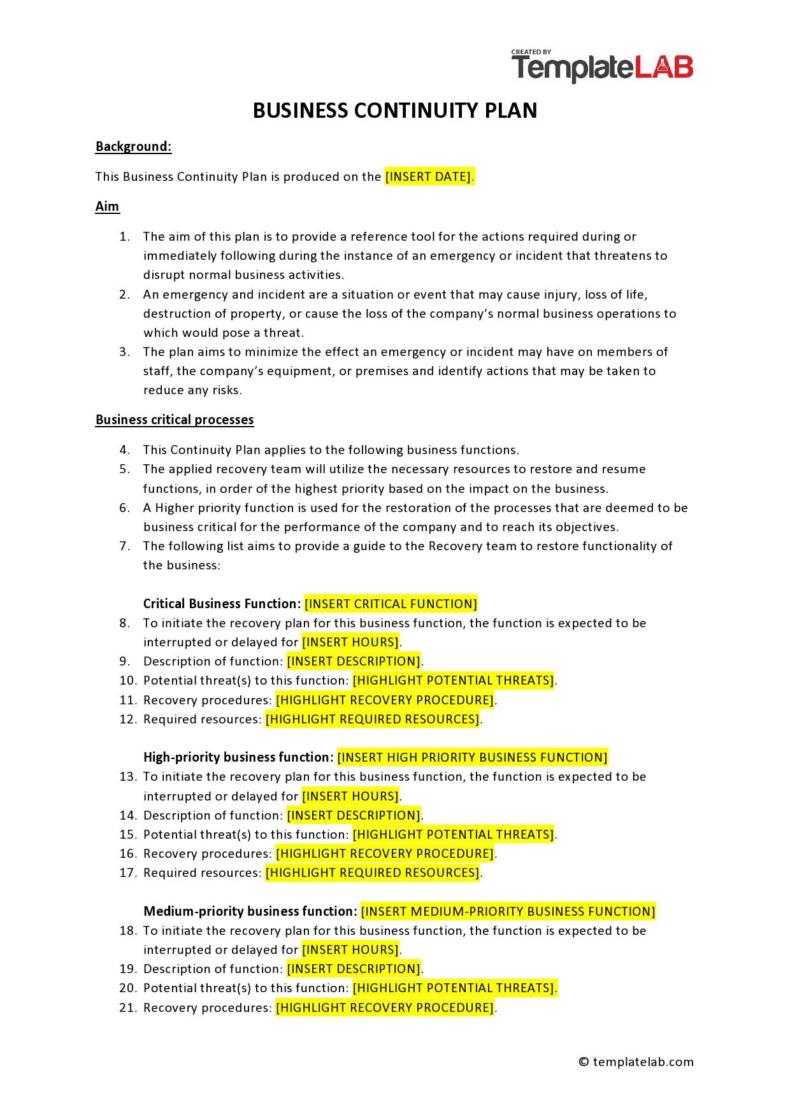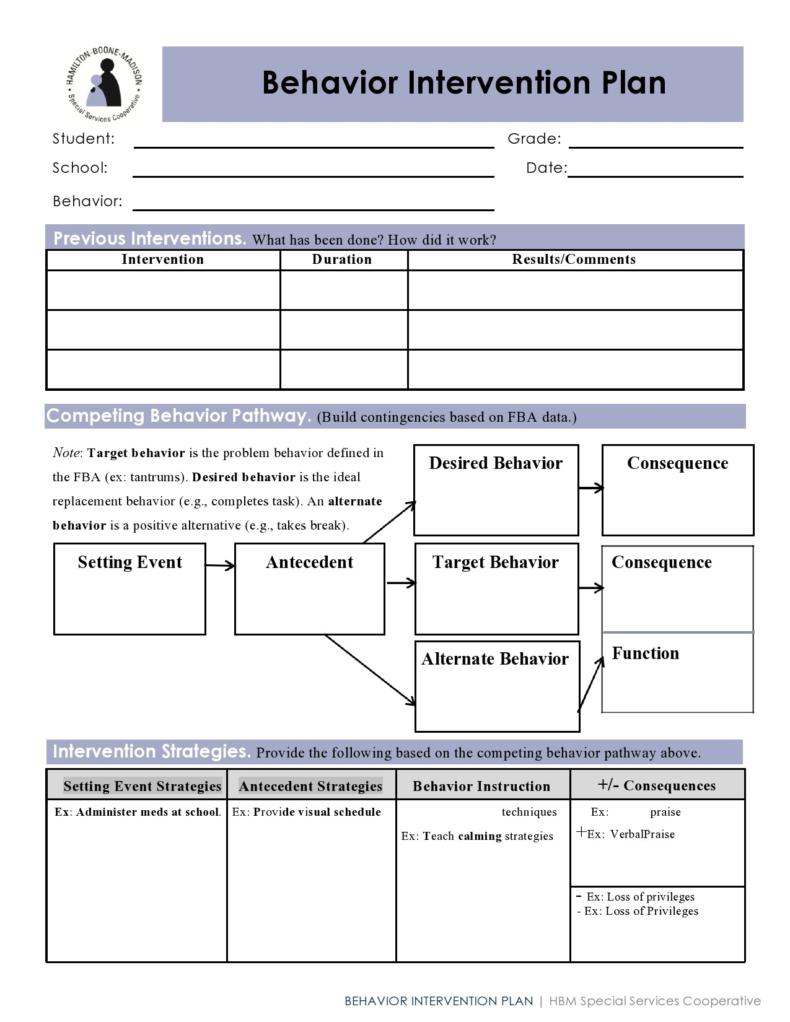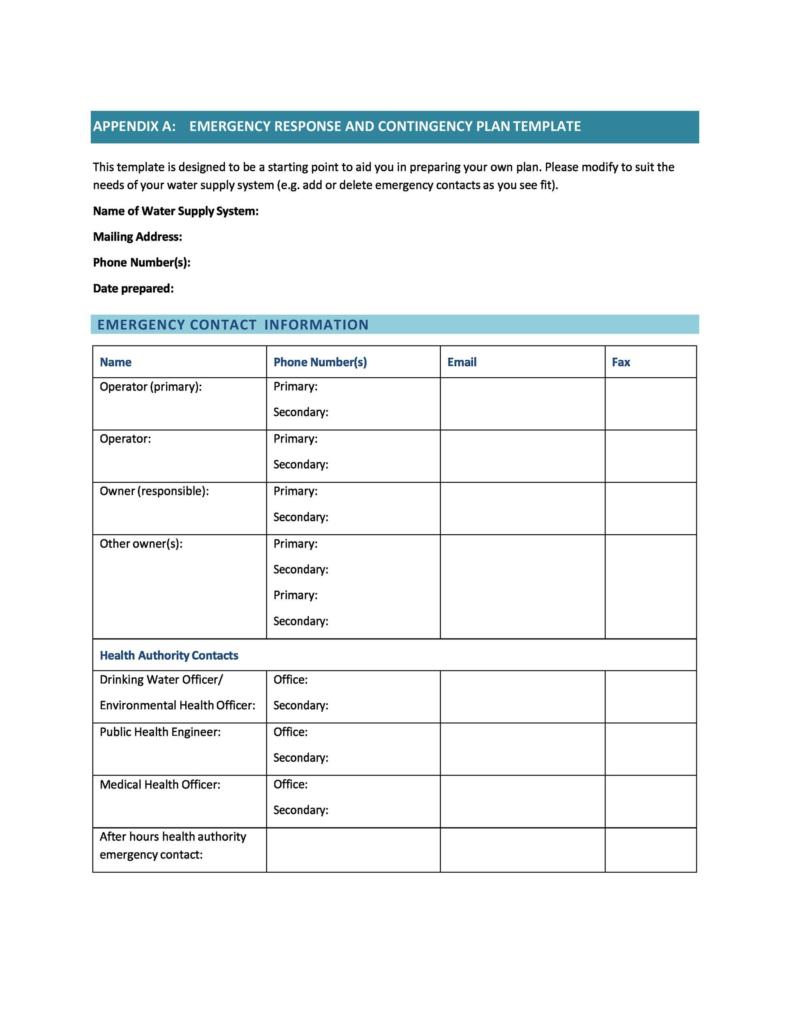After the approval of a policy, the next thing that follows is its implementation. The policy was already studied after which you make recommendations on the best set of actions to take. These recommendations are then set to action through an implementation plan which involves documented steps needed to successfully complete your implementation activities.
Implementation Plan Templates
Components of an implementation plan
You can come up with an implementation plan for different kinds of organizations no matter what the scope or size is. Almost all of these implementation plan templates are very useful for deployment of technology, discrete projects, inventory planning, and more. You can also create your own implementation plan example for your own personal use to help you achieve your goals.
Implementation Plan Examples
When you have a project on hand, you can make a strategic implementation plan that can successfully move this project into action. The plan involves these components:
- Define your objectives or goals
What is it that you want to accomplish? Your answer to this question also depends upon the size and scope of your project. - Make a schedule for the milestones
Although project timelines and task deadlines are already mentioned in the project’s execution plan, it’s still recommended to make an outline of your whole schedule in your implementation strategy example. - Allocate your resources
Do you have enough resources to execute the plan successfully? This, of course, refers to money, personnel, and time. Allocating your resources is one of the core purposes of an implementation plan. - Designate the responsibilities of each team member
Each team member should have their own assigned roles for the project. Don’t think of this as an individual doing his own work but rather as individuals doing their own tasks in a general plan for the team. - Define the metrics for success
Answer the following questions to define your metrics for success:
What’s your gauge in determining whether you’re successful or not?
What’s the basis, whether qualitative or quantitative, when measuring your results?
What are your methods for gathering information? - Describe how you plan to adapt
It’s inevitable that you will make changes to your implementation plan template as it goes into execution. Make sure to take into account factors that are outside of your control which can significantly change the success and outcome of the project.
You should have contingency plans created ahead of time to avoid getting derailed as the project progresses. Doing this helps build your experience on flexibility, prompt action, and agility. - Evaluate your success
Aside from establishing the metrics for your success, you also have to decide on how frequently you plan to evaluate the progress of your project. Some examples of these are monthly reviews, quarterly reviews, and so on.
Project Implementation Plans
Steps to create an implementation plan
At this point, you should know that an implementation plan is crucial in the improvement of a business. Many organizations can often have difficulties in implementing an efficient plan which guarantees success in its outcomes. To guide you, here are steps to create a strategic implementation plan:
- Come up with a list of the required outcomes
You need a list of the outcomes that you want to accomplish in your implementation exercise before you can determine your plans of action and the priorities of the tasks. Most of the time, you get the items on the list in the form of review recommendations or from a business improvement exercise. - Assign a champion for each of the outcomes
After coming up with the list of possible outcomes, you assign a champion for each outcome. One who is always motivated in achieving his assignment and who also keeps his entire team members accountable for achieving it. You should already know these champions within your organization.
The best person is one who has passion and commitment to a smooth implementation. Make sure that you share the roles so that you have several champions, not just one person carrying all the responsibility. - Determine the actions to take to achieve the desired outcome
In this part of the implementation plan, jot down all the possible actions to take that ensures your team’s success in achieving your desired outcomes. Most of the actions have a very practical nature. Some can even seem quite simple or obvious.
Remember that you always need a measure because, without this, progress becomes just a matter of opinion. Also, opinions can be easily subject to change in the course of your timeline. - Establish the budget, roles, and accountabilities
After defining your list of actions which ensures the completion of the activities in your plan, you now have to think about the responsibilities and roles of your team and the actions they need to do. - Create a tracking sheet so that you can keep track of progress
There’s always the need to update yourself on the current status of the project. For this, you should have a tracking sheet which gives you a visual update of the status of your implementation plan, the completed actions, the actions in progress, and the delayed ones. With this sheet, you can quickly deal with any problems to avoid delays. - Follow the methodology for project management
This a series of various governance structure, processes, and controls designed to help manage your time, resources, and activities more effectively. Through this methodology, you can even deal with problems proactively whenever they arise. - Schedule a review after 6 months
Some areas of your implementation plan example are always subject to change. This becomes a learning opportunity which you should review. In this review, you can identify the areas that worked, what didn’t, and what areas need improvement.
The setbacks you encounter in the course of the project are very important. You can use this information in your next set of activities, on issues that can be potentially avoided or reduced.
Strategic Implementation Plans
Some practical tips for implementation planning
You can have all the components of an implementation plan but this is not a guarantee it will succeed. Instead of focusing too much on the form of the plan, you must focus more on its substance, its implementation process, and in fostering these behaviors among the members of your team:
- Assign a team for the task
You should organize an implementation team tasked to successfully implement a certain initiative. Although it’s true that you can move through the implementation process without having to create a specific and organized body that oversees the process, having one increases your chances for success. - Select a strong team leader
You should have a team leader who’s highly capable of coaching and educating the members of the team along the process. If needed, this leader should ask guidance from previous leaders so he can improve upon the existing implementation process within the company. - Establish actionable goals
Always be very specific, especially when defining prevailing issues and identifying their root causes. There are several ways to define the current problems like brainstorming, information forms for new members, and surveys. For practical reasons, you can use the “note card method.”
Then sort the note cards into separate piles that have similar answers. Count which of the answers are most common within your group. From this, you can use the answer with the highest number of note cards to start discussions on how to carry on. - Create your strategic implementation plan
It doesn’t matter what predicted duration or size your goals and objectives are. In either or any case, you need to come up with a plan that focuses on incremental action. Even small steps would add up to bigger ones, so always maintain a positive attitude and concentrate on the future.
But your plan should be very realistic too. You should know the problems that need solving so you won’t end up dealing with “proxy problems.” - Encourage communication
It’s the responsibility of the leader not just to value other member’s inputs, but to encourage participation as well. Open and honest communications keep the processes transparent. Communication can also help in generating new ideas. - Keep on monitoring progress
To analyze the project’s development, it is a must to perform project analysis. Also, hold the progress meetings regularly. Monitoring closely the progress of the project can allow you to make any necessary adjustments before it hits crisis level. This also allows you to adjust before expectations or processes become solidified.
Furthermore, when you treat smaller milestones as mini-successes, it can help foster an attitude in employees where they feel appreciated for their project contributions. - Involve the right people at the right times
Some phases of the implementation plan template define why and when it’s appropriate to only involve certain parties. For instance, at the beginning of the planning, only upper management, meaning the decision-makers get involved and not everyone else. - Publicize the plan
It’s not necessary to have every stakeholder’s input all the time during the implementation planning. However, you should maintain transparency with them and the other teams.
The best way to do this is to make your plans readily available to everyone, especially those who hold high positions in the company. Doing this also keeps your team accountable throughout the duration of the project.

